2024 Wildlife Sightings: Incredible Findings and Photos
Welcome to the Kiawah Island Nature Program’s 2024 wildlife sightings. Here you’ll find postings from our Naturalists and island biologists, showing you what is currently in the field, as well as an archive of observations from throughout the year. We hope this archive will get you excited about the amazing and diverse wildlife found on Kiawah Island. Share your photos and stories with us at Kiawah_Recreation@KiawahResort.com
July 26, 2024 ~ Tagged Painted Bunting!
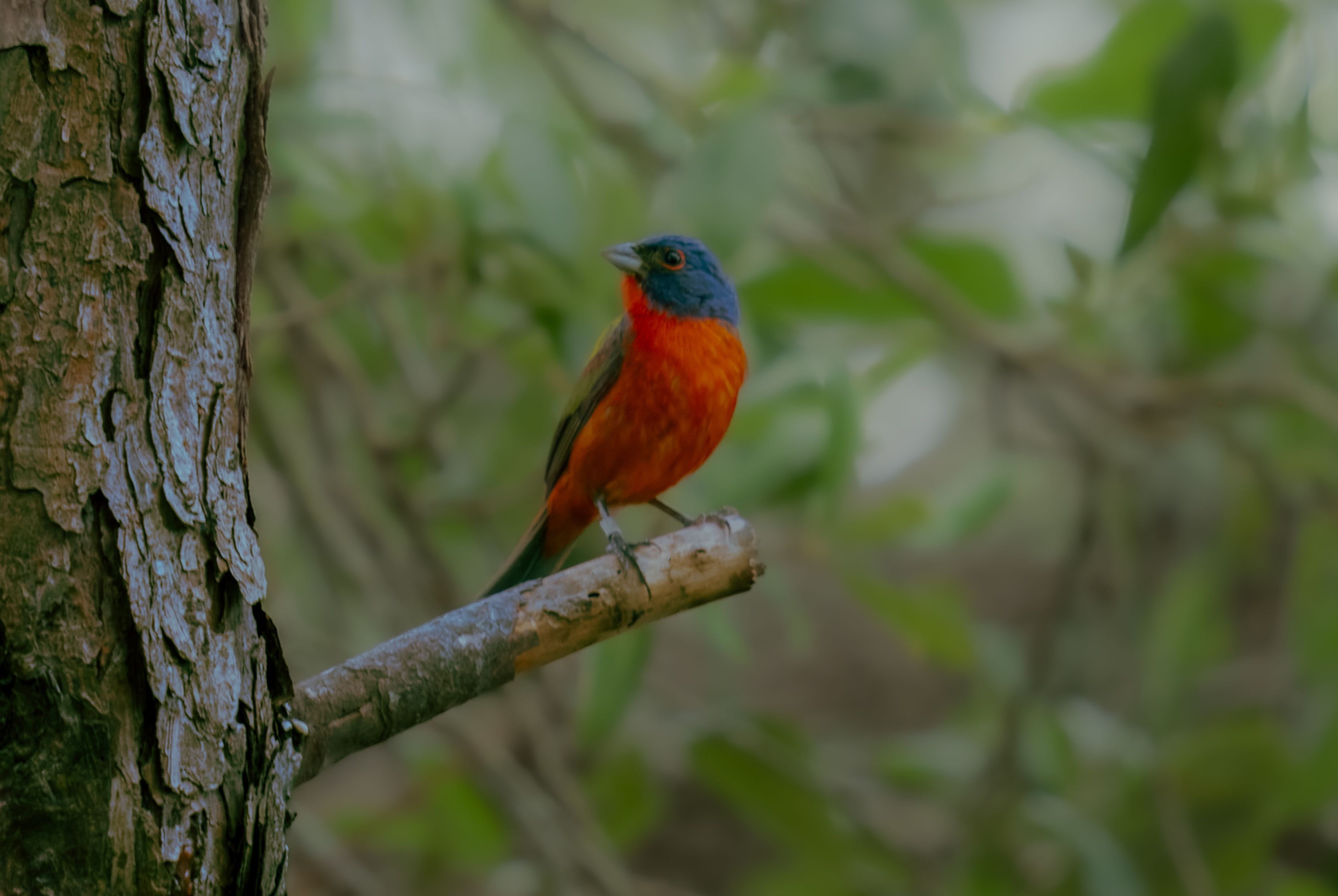
While birding at Mingo Point, I came across an adorable painted bunting male! If you look at its leg, you might see a little piece of “jewelry!”
This is how our town’s biologists keep track of these amazing birds. This past week, our awesome biologists continued their tagging process – they caught 29 birds in only a few hours! What an awesome find 🙂
~ Naturalist Stephen
July 25, 2024 ~ Eastern Glass Lizard!
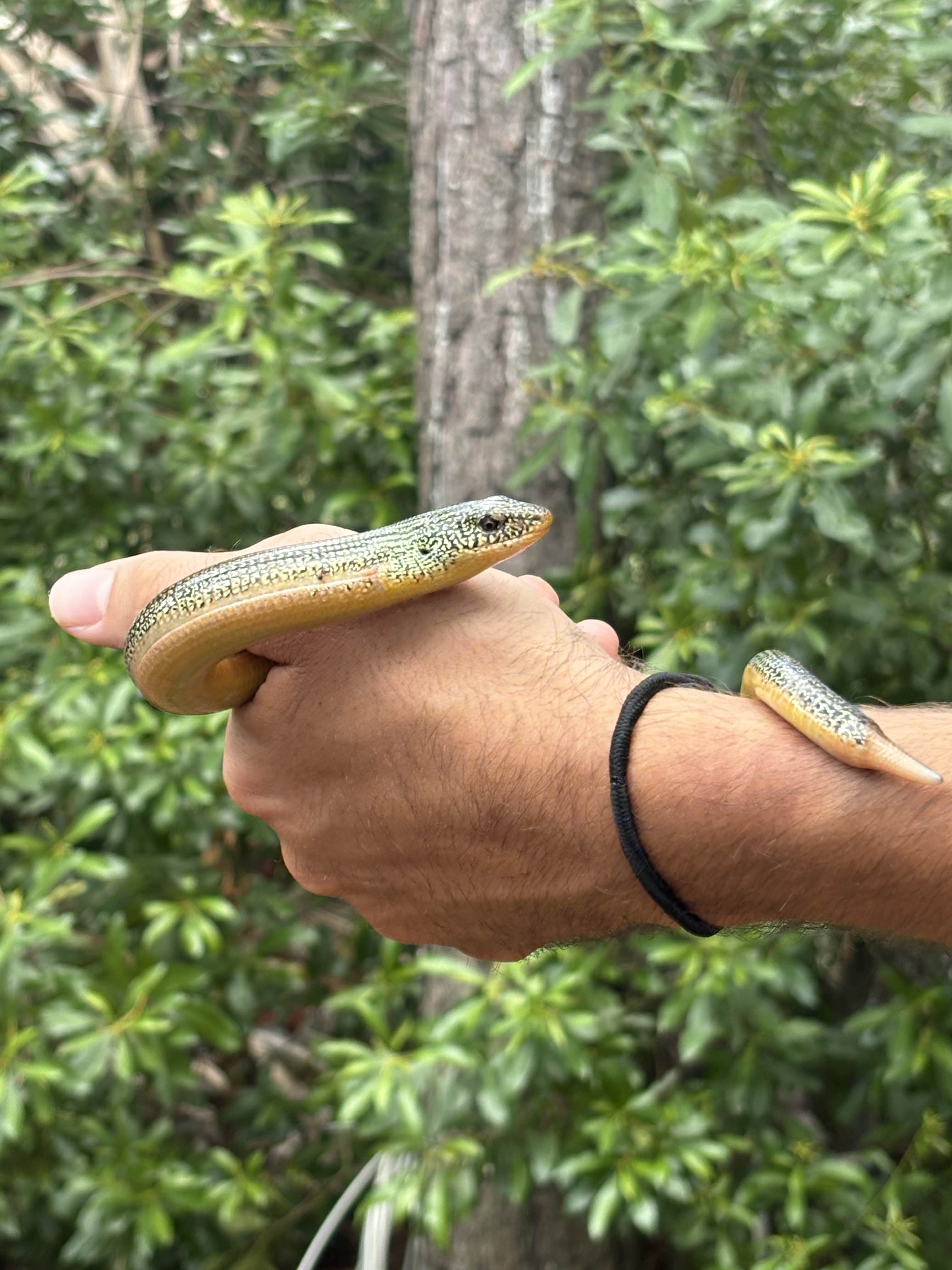
Meeting Moment: Imagine crossing paths with an Eastern Glass Lizard mid-meeting! Often confused for snakes due to their legless bodies and forked tongues, these awesome creatures show us the magic of convergent evolution. Different creatures, same environmental adaptations. Isn’t nature undeniably fascinating? 💚
July 23, 2024 ~ Clapper Rail
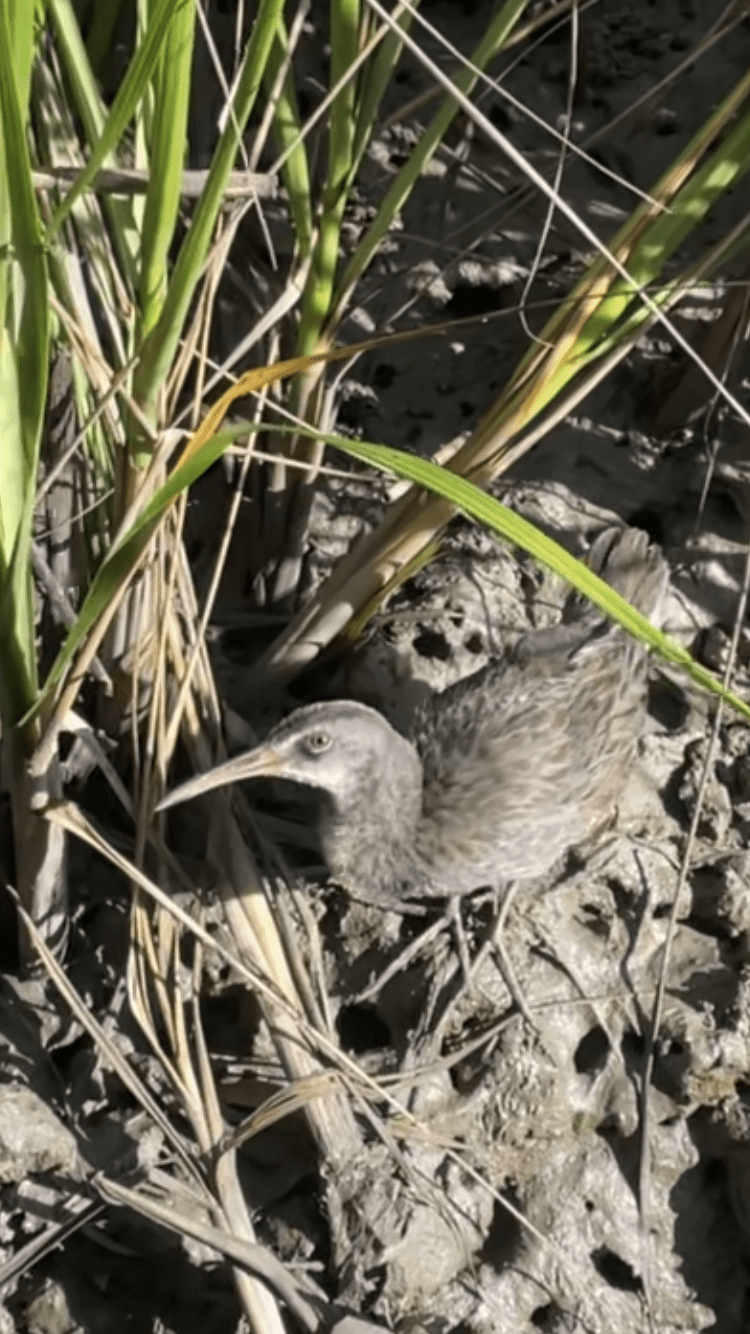
An uncommon sighting!
If you’re out on the Kiawah River, you might hear these birds but struggle to see them. The clapper rail has a loud cackle that can be one of the signature sounds of the salt marsh. They are very skittish, so they can be very hard to find. In addition, they can make themselves as “thin as a rail” to blend in with grass. I was lucky enough to spot some at Mingo Point this week.
Whenever you walk by the marsh, I would take a careful look. You may be lucky enough to spot one too!
-Naturalist Carson
July 22, 2024 ~ Raccoon
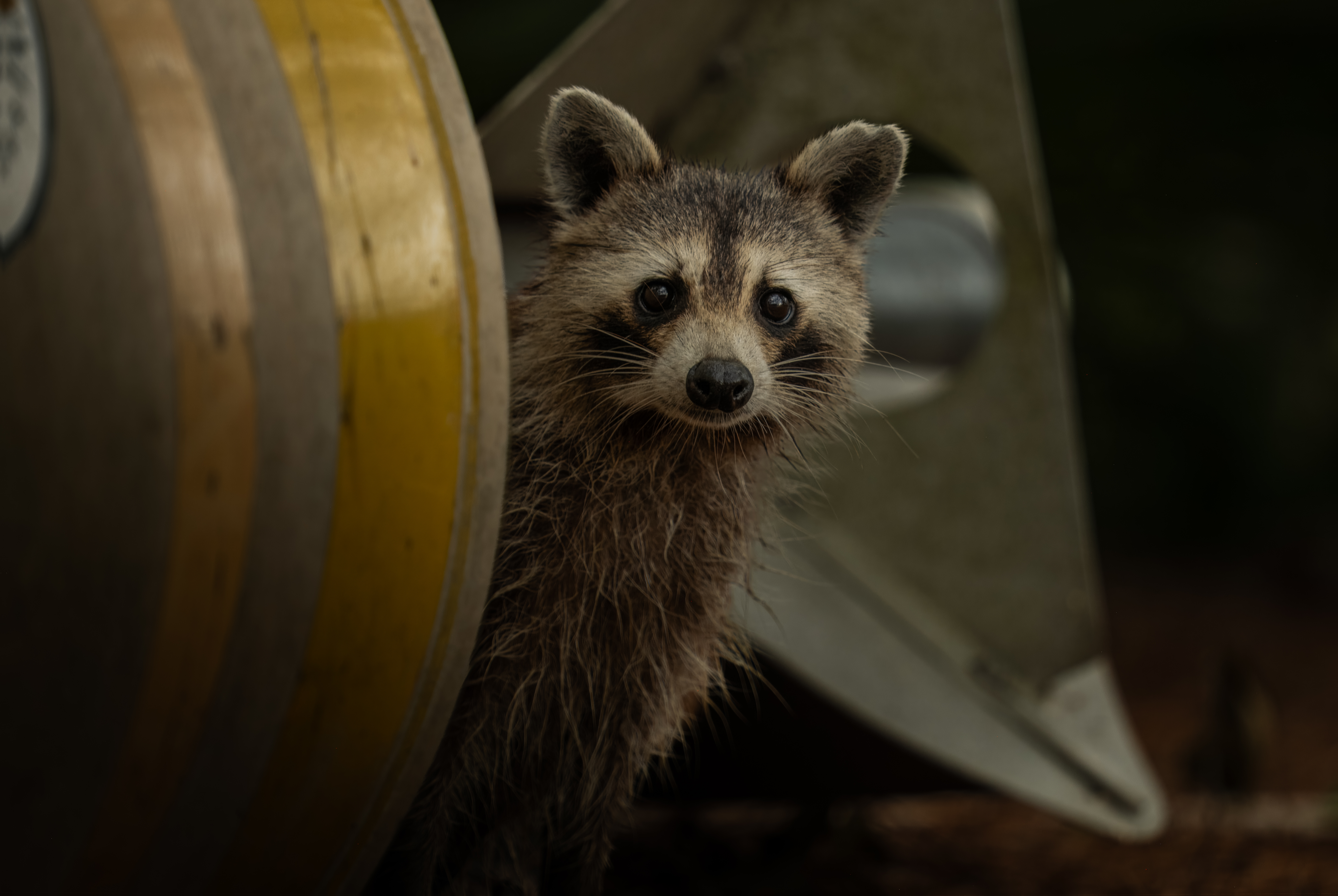
I was cleaning up from a Sunset Paddle at Mingo Point when a curious visitor decided to say hi! This raccoon seems to hang out in the marsh, coming out to enjoy leftover birdseed in the evening – as long as the coast is clear and most people have left, he definitely doesn’t mind a snack! While many people believe raccoons are nothing more than simple pests, they are some of the smartest animals in the World. These amazing creatures are able to remember complex tasks for up to 3 years – they are even capable of picking locks if the treat is attractive enough
~Naturalist Stephen
July 20, 2024 ~ Mantis Shrimp
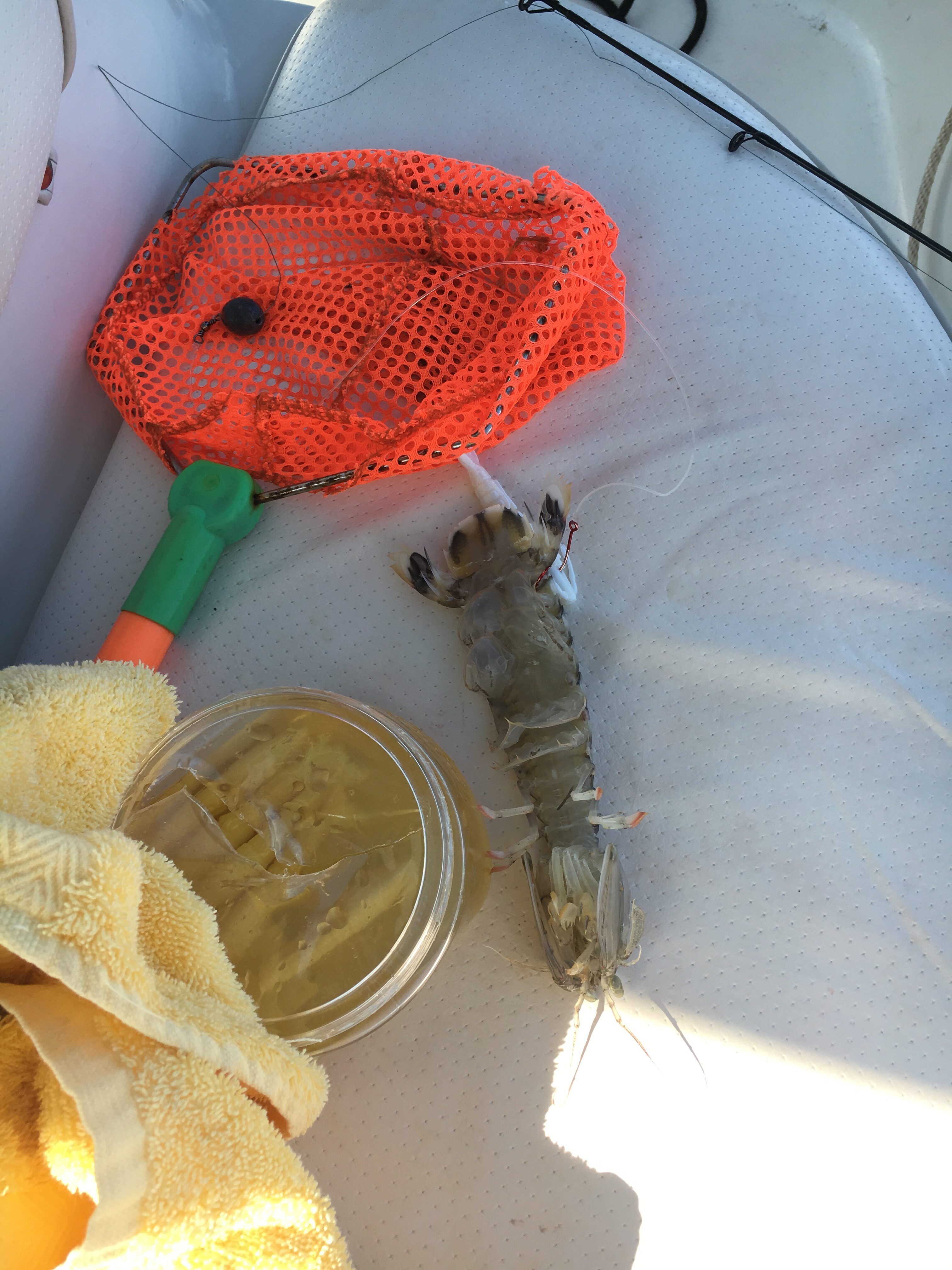
Check out this incredible mantis shrimp caught on a recent fishing trip with Captain Mike. With a punch moving at 23 meters per second, these rare creatures pack quite a bit of power!
Not to worry, after a quick photo op, our little friend was safely released back into the wild. Thanks to our amazing guest for sharing this crazy creature with us! Amazing, isn’t it?
July 16, 2024 ~ A swallow-tailed kite!
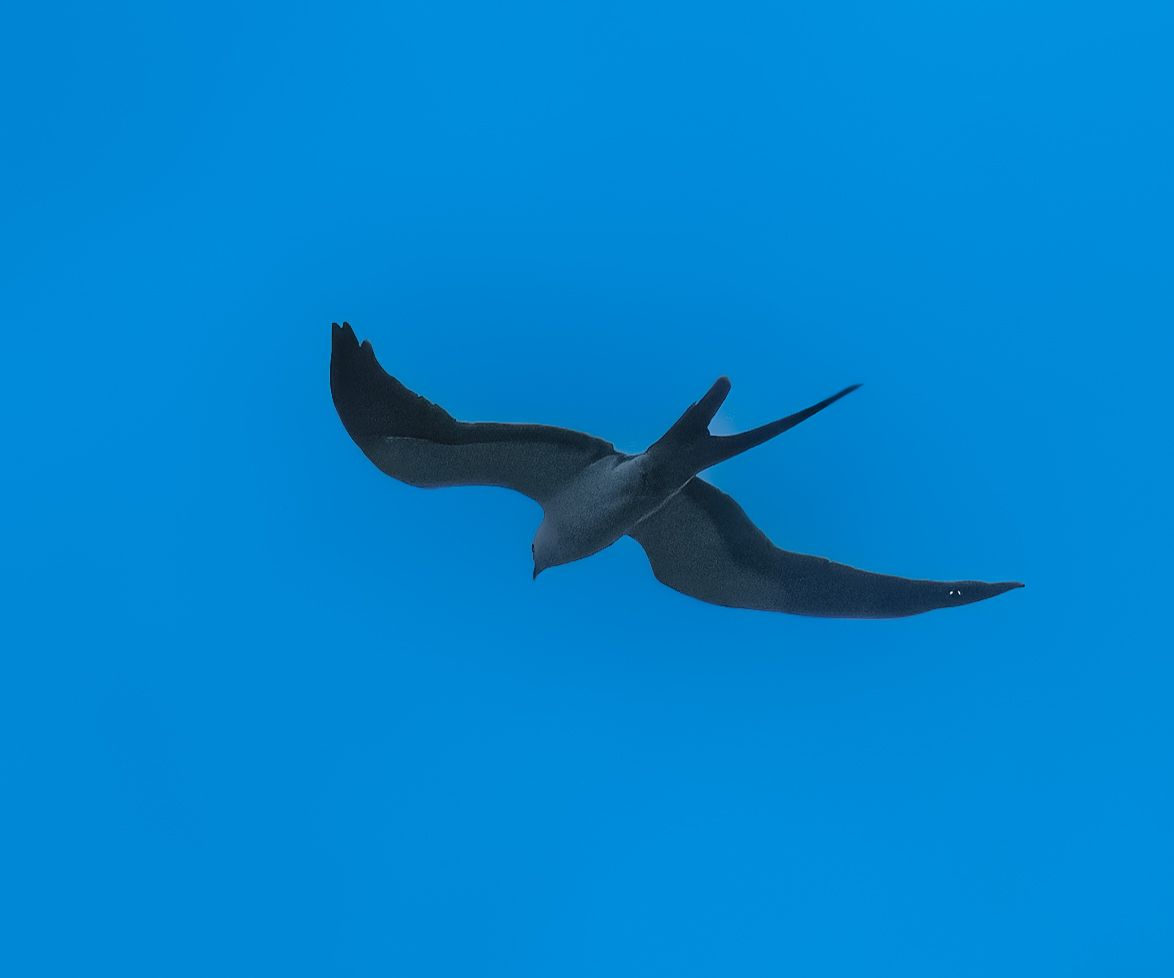
This is such an incredible sighting to find on Kiawah! When she was driving near Mingo Point, Naturalist Annie stumbled upon the amazing swallow-tailed kite! While the beautiful forked tail gives way to the name “swallow-tail,” these birds are stunning in so many other ways. Being insectivores by nature, you’ll often find kites of any sort soaring and graciously gliding through the air chasing insects high up in the sky. While we commonly get Mississippi kites on Kiawah in the Summer, this sighting is one for the books! We only see swallow-tailed kites once every few years. In fact, there is a way to report these birds to the Birds of Prey Aviary center to help with research into the migration patterns of these magnificent creatures. With the beautiful white and black plumage, these birds will bring joy to any nature enthusiast lucky enough to find them!
Awesome spotting, Annie!
July 14, 2024 ~ Belted Kingfisher

While out and about checking some ponds, I stumbled across one of my favorite birds! The belted kingfisher is a master of flight – usually hovering above the water before it finds a tasty fish, they quickly dive in to catch their treat! These birds are easy to spot; just wait for the “trill” noise they make and check out any open logs or canopy. Just like an osprey or a hawk, they love open areas to maximize their visibility.
As always, happy spotting!
~ Naturalist Stephen
July 12, 2024 ~ Baby ‘gators galore!
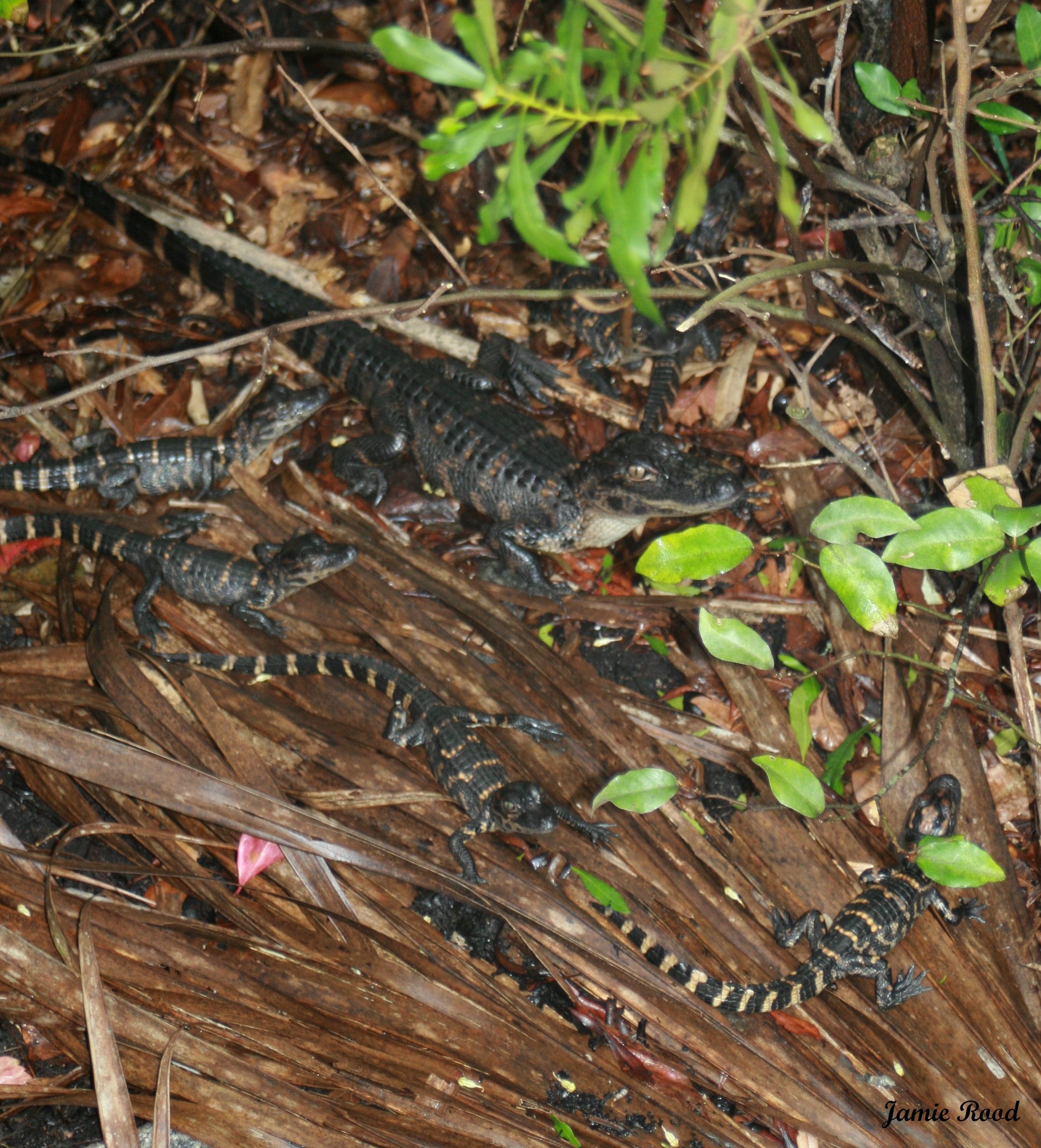
Momma’s little secret! 🐊 Ever wondered where the young gators spend their time being guarded by mom? Take a gander at these cuties found by one of our Naturalists during a bike tour. How many can you spot? 👀
July 10, 2024 ~ Golden silk orb-weaver

Get ready for our seasonal guests at Kiawah, the fascinating Golden Silk Orbweavers, fondly known as banana spiders! Their prominent size might be awe-inspiring, but don’t let that fool you, they’re as peaceful as they come. Armed with their long, fuzzy legs to sense the slightest vibrations, these lovable lurkers are a common sight during the summertime. Get your cameras ready, and don’t worry, they won’t bite!
July 2, 2024 ~ Tri-colored Heron
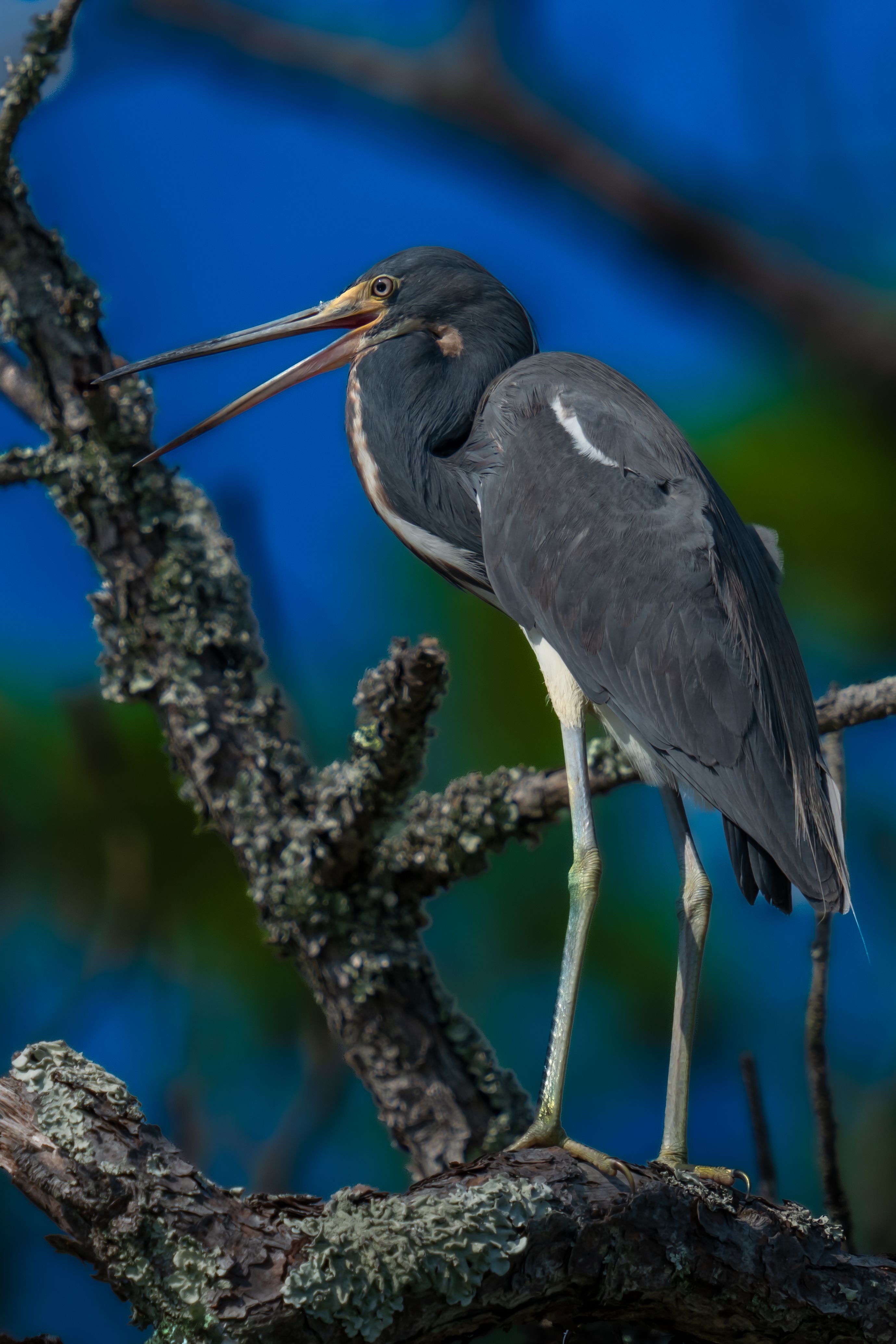
While enjoying an evening at Killdeer pond, I stumbled across one of my favorite herons; a tri-colored heron! While these beautiful birds are relatively common on Kiawah, their bright, multi-tonal feathers are absolutely awesome! Keep your eyes peeled for our heron friends at any pond on Kiawah. You’re definitely in for a treat in the summer!
Happy spotting!
~ Naturalist Stephen
June 24, 2024 ~ Anhinga; our “snake bird”
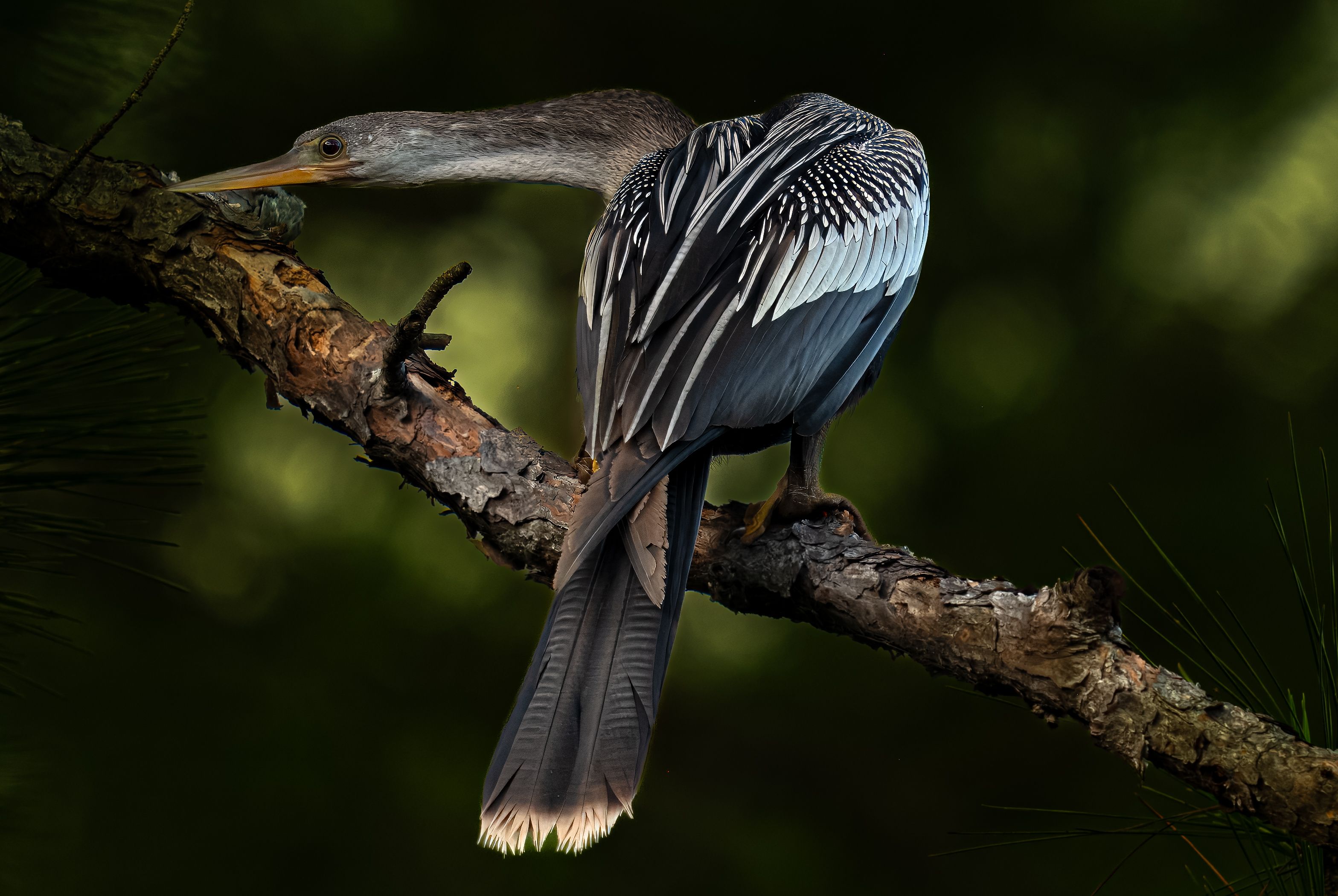
While strolling around Osprey point, I found one of my favorite summer birds! Anhingas, commonly referred to as “snake birds,” are gorgeous aviary friends with a cool trick up their sleeves. Instead of hunting fish by dive-bombing like pelicans or terns, they instead let their feathers get soaking wet. This gives them added weight to sink below the water and swim around to catch their prey; with the help of their watered-down feathers, long neck and pointed beak, you definitely don’t want to run into this beauty if you’re a fishy friend! Because of their added “water-weight,” many people often only see their head and neck sticking out of the water – hence the nickname snake bird. If you think you see a cobra in our ponds, fear not! It’s most likely our beautiful anhinga friend. 🙂
As always, happy spotting!
~ Naturalist Stephen
June 22, 2024 ~ Great-crested flycatcher
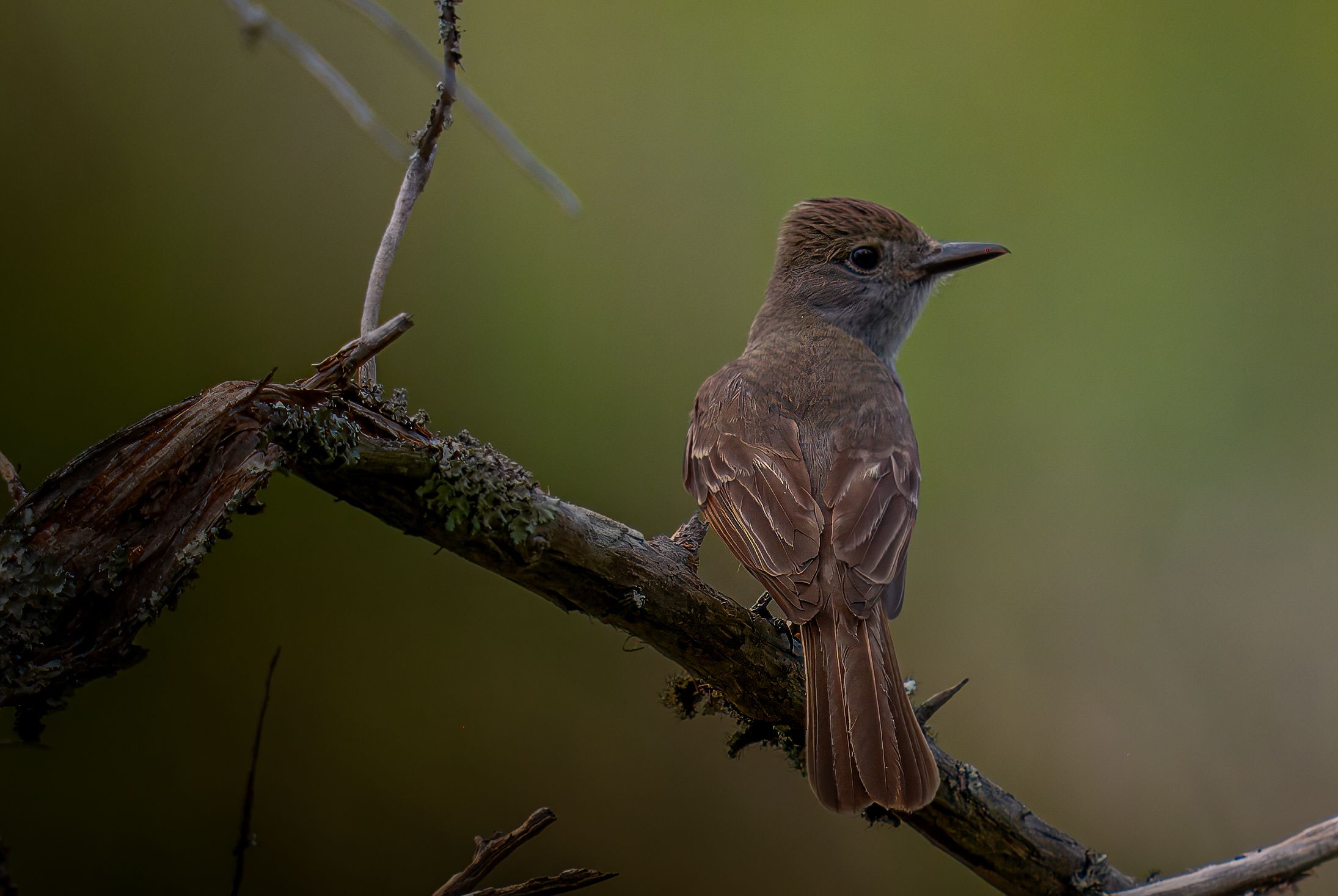
While out on a Birding for Beginners tour, we found a wide variety of our birding friends. From Osprey, to bluebirds, to red-shouldered hawks, it was definitely a good day to be birding! Our great-crested flycatcher is one of the more common birds chirping away in the summer heat; they can be found all over Kiawah, and their beautiful call and yellow chest makes them an awesome spot. Unfortunately I couldn’t get a shot of that yellow, but even from the back this bird is still gorgeous!
I always say that – while all our birding tours are beginner friendly – you still never know what you might come across. No matter what, summer birding on Kiawah is definitely an exciting venture.
As always, happy spotting!
~ Naturalist Stephen
June 18, 2024 ~ Yellow-bellied slider laying eggs at Night Heron Park!

We spotted this yellow-bellied slider mama as she was laying her nest right here in Night Heron Park. A common sight in any of Kiawah’s freshwater ponds, these aquatic reptiles are just one of the many species nesting on the island right now.
Keep a look out for more hard working mothers on Kiawah these last few days of Spring!
~ Naturalist Noah
June 16, 2024 ~ The spoonbills are back!

Our gorgeous roseate spoonbills have finally returned! Kiawah is lucky to be graced by these wondrous creatures – being one of only six spoonbills found in the World, we always are delighted to spot our feathery friends! Keep your eyes peeled around the saltmarsh, or in our brackish ponds as they love to hunt with egrets, wood storks, and other wading birds!
Happy spotting!
~ Naturalist Stephen
June 14, 2024 ~ See ya later, alligator
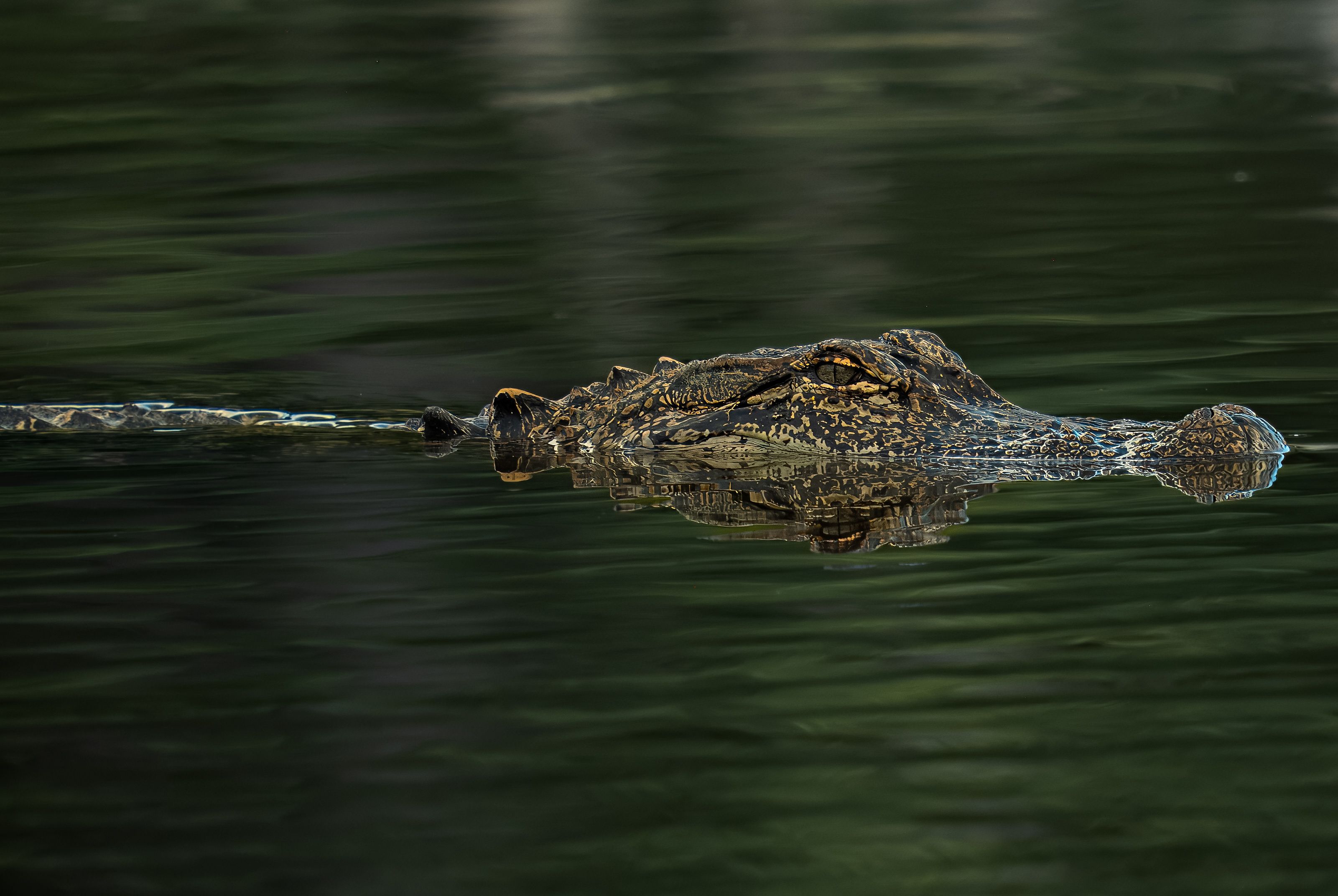
Don’t be fooled by the summer season, our ‘gators are just keeping it cool! With a steady population of about 700 alligators on Kiawah, it’s not about “if” but “when” you’ll spot one! Keep your gaze at the waters, you never know when these magnificent creatures will put up a show. 🐊☀️
June 10, 2024 ~ Great egret fly-by

Orange beak, black feet means great egret! These beautiful birds can be seen all over Kiawah – whether they are eating in the Marsh or hanging out in one of our ponds, you’ll be sure to spot these beautiful birds!
June 6, 2024 ~ Least bittern!

Look closely in the marsh grass and you might find this bird hiding there!
I spotted this Least Bittern while out at the Ocean Course. They are one of the smallest members of the heron family, weighing about the same as a deck of cards! These tiny herons are more often seen around the island from May to August, when they nest here. Because they are so small, they have to worry more about predators than other herons, so they have a neat trick they do to keep themselves hidden! If the least bittern feels threatened, they will point their beak to the sky and show off the brown streaking on their throat that resembles the marsh grass they hide in, camouflaging themselves so well they can be nearly impossible to spot!
Next time you’re out birding in the wetlands, play a game of “I Spy” and try to find a Least Bittern!
~ Naturalist Annie
June 2, 2024 ~ Our beautiful blue birds are as blue as ever!

The eastern bluebird is probably an animal you’re somewhat familiar with – whether you’re an avid birder or a casual nature-lover, these fellas’ are hard to miss! Their bright blue bodies seemingly glow in the sunlight, and their orange chests and white bellies only help accentuate their beauty. If you’re out and about in the early morning, be on the lookout! This time of year our bluebird friends are extra busy; from nest building to feeding their young, they become active the second the sun comes up. You’ll often find them near an open field, enjoying their view and watching for any potential snacks. Or, you might find them in the canopy, chirping away to warn others of their territory. Really – you can find these beautiful songbirds anywhere this time of year!
Just look out for that gorgeous blue, and you’ll find yourself a bluebird in no time.
Happy spotting!
~ Naturalist Stephen
May 30, 2024 ~ Beautiful snowy egret
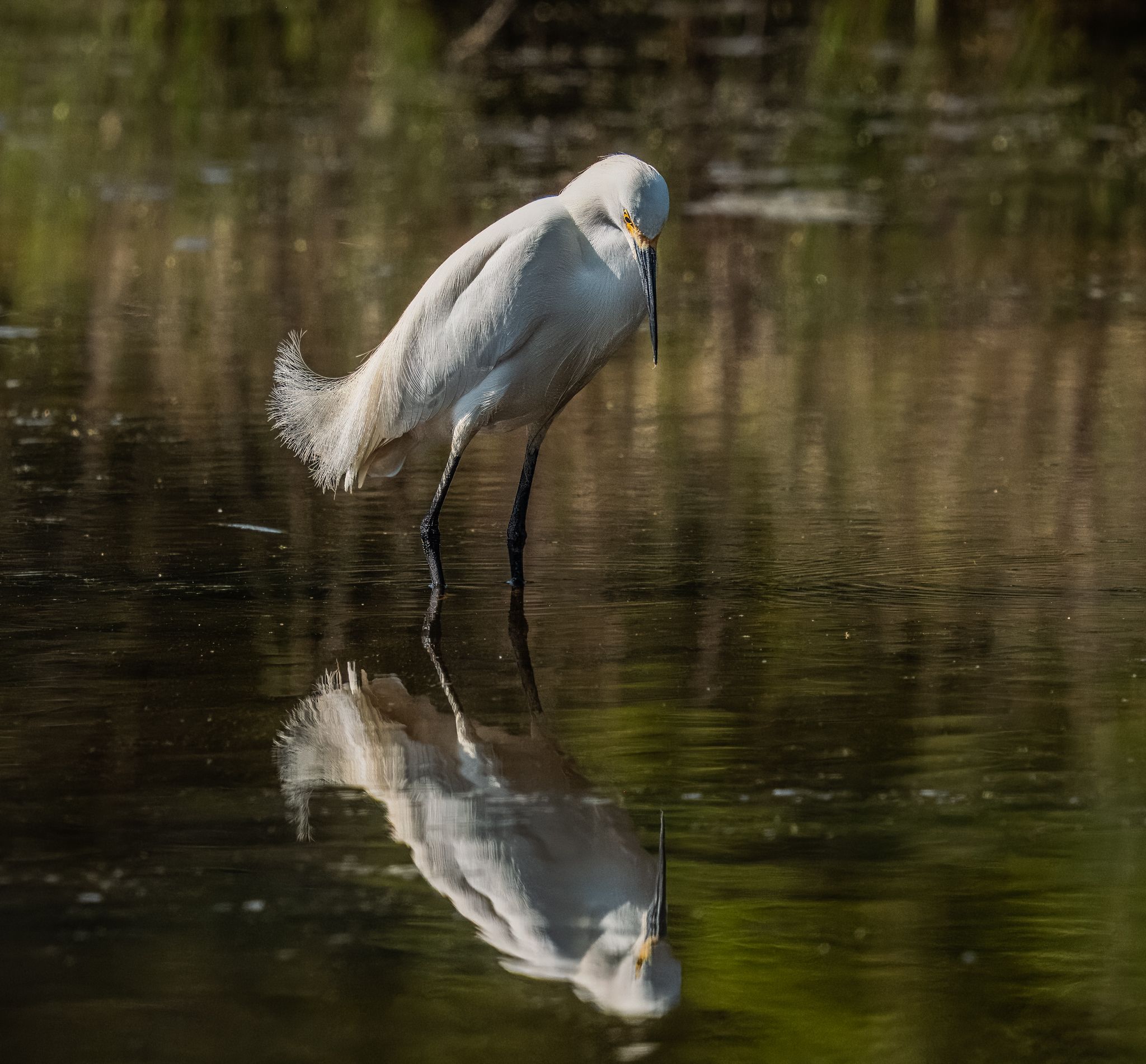
While extremely common on Kiawah, every snowy egret I see still manages to completely amaze; often times, I’m left in awe enjoying them slowing stalking along the water’s edge. These patient hunters – with their sharp beak and elongated neck – wait for prey to come nearby before striking in a quick, spear-like motion. It’s always so much fun to see what treasure they might bring up!
If you’re in the area and see a beautiful, white bird like this, be sure to look at the feet and the beak! The saying goes: black beak and yellow feet is a snowy egret, but an orange beak with black feet is a great egret. While you can’t tell the feet color from the photo, the beak is still a giveaway!
As always, happy spotting!
~ Naturalist Stephen
May 5, 2024 ~ Ospreys among us!

Be on the lookout as our beautiful ospreys embark on their return to the island! Ospreys nest on Kiawah Island with incredible numbers. Monogamous for life, these gorgeous raptors can winter hundreds of miles apart from their partner, and still find one another every year.
With a preference for nesting in open spaces, dead trees, and even telephone poles, our osprey friends are a must see if you are new to Kiawah’s beauty! Luckily for us, they are incredibly active building nests, laying eggs, and tending to their newly-born hatchlings.
~ Naturalist Stephen
April 23, 2024 ~ Double-crested cormorant
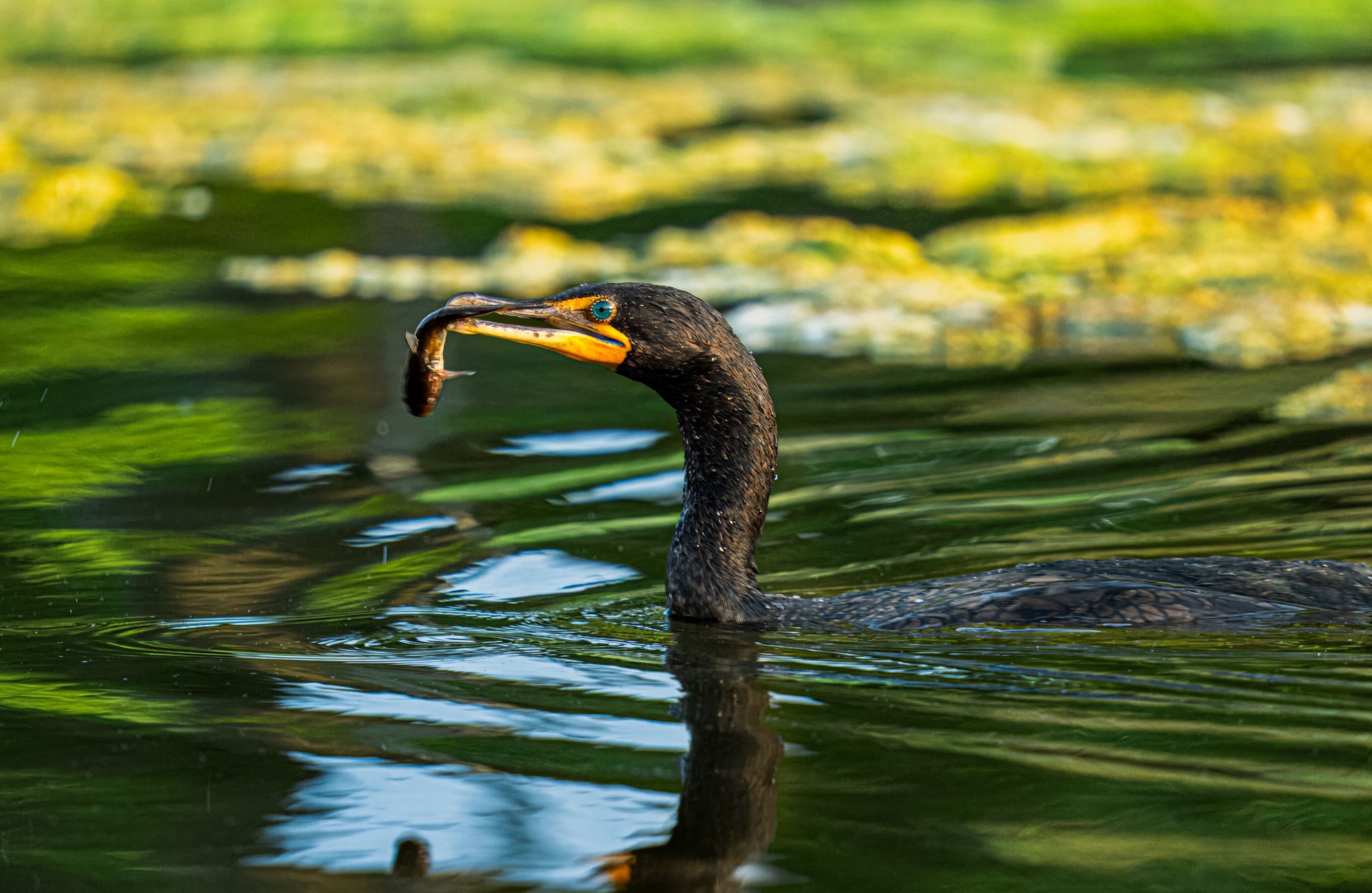
Just because an animal is common doesn’t make it any less special! While many double-crested cormorants migrate North of Kiawah for the Spring, we are lucky to have a residential population that stays here year-round!
These cormorants are absolutely incredible; unlike other ducks and shorebirds, whose waxy, hydrophobic coating keeps their feathers dry, our fishing friends will instead allow their feathers to soak completely. This weighs them down, giving them additional mobility underwater. They dive in and use their hooked beak to catch their prey.
They can dive up to around 25 feet as they swim around and catch fish. After fishing, they usually prefer to find a nice, sunny spot and open their wings to dry off their feathers. Talk about a cool bird!
~ Naturalist Stephen
April 23, 2024 ~ There’s never a dull day at the Ocean Course
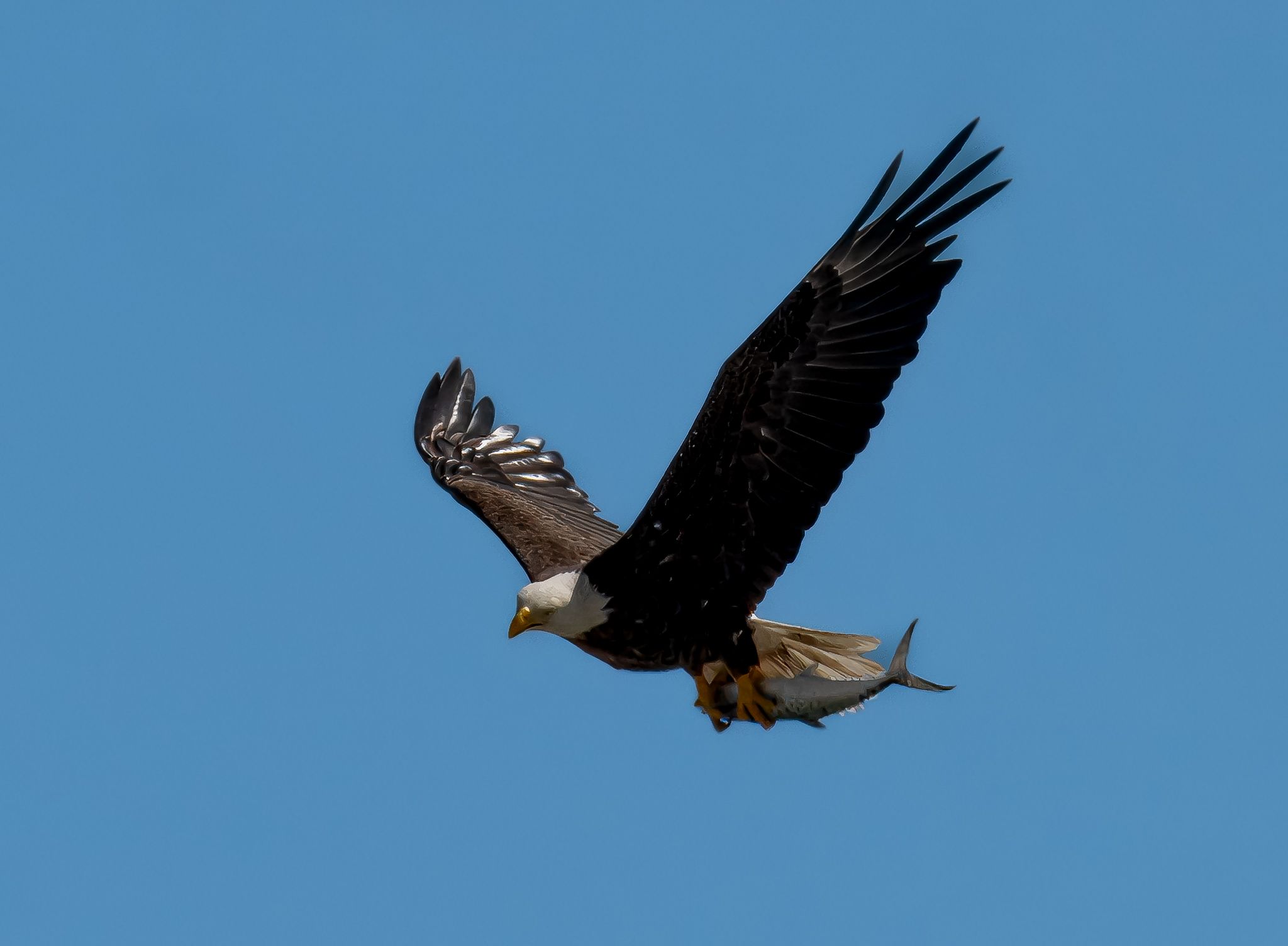
I had just arrived at the Ocean Course when I got a show of a lifetime! Walking to the beach, I found three ospreys hunting along the surf. Suddenly, two bald eagles appeared and began “fighting” for one of the osprey’s fish. If you have ever seen a bird fight, most of the time it is one bird chasing the other away. Sometimes our raptors will fight back, but – usually – a bird the size of a bald eagle is not something many others want to mess with. After some scuttling back and forth, our two bald eagle friends managed to steal the osprey’s food and fly away.
Fortunately for our osprey friend, there was still plenty of fish in the ocean! In about 5 minutes they had another fish, and happily left the area to enjoy lunch.
Keep an eye out for action like this all over the Island; birds are fighting for any resource they can as they get deep into the breeding season!
WE ALSO SAW A RUDDY DUCK! I wasn’t able to take pictures but it was truly an amazing find!
And, as always, happy spotting!
~ Naturalist Stephen
April 22, 2024 ~ The buntings are back!

Keep your eyes peeled for our gorgeous painted buntings! These birds migrate to Kiawah over the summer months, and bless us with their beautiful, “painted” look. With a plumage spotting blue, yellow, orange, red, and some green, these are one of our most sought after birds for our Summer adventurers!
To try and find painted buntings yourself, keep an eye out near dense shrubs, especially in heavily forested areas. They love broadcasting themselves on bush edges and low areas around Kiawah.
Happy spotting!
~ Naturalist Stephen
April 12, 2024 ~ Florida horse conch!
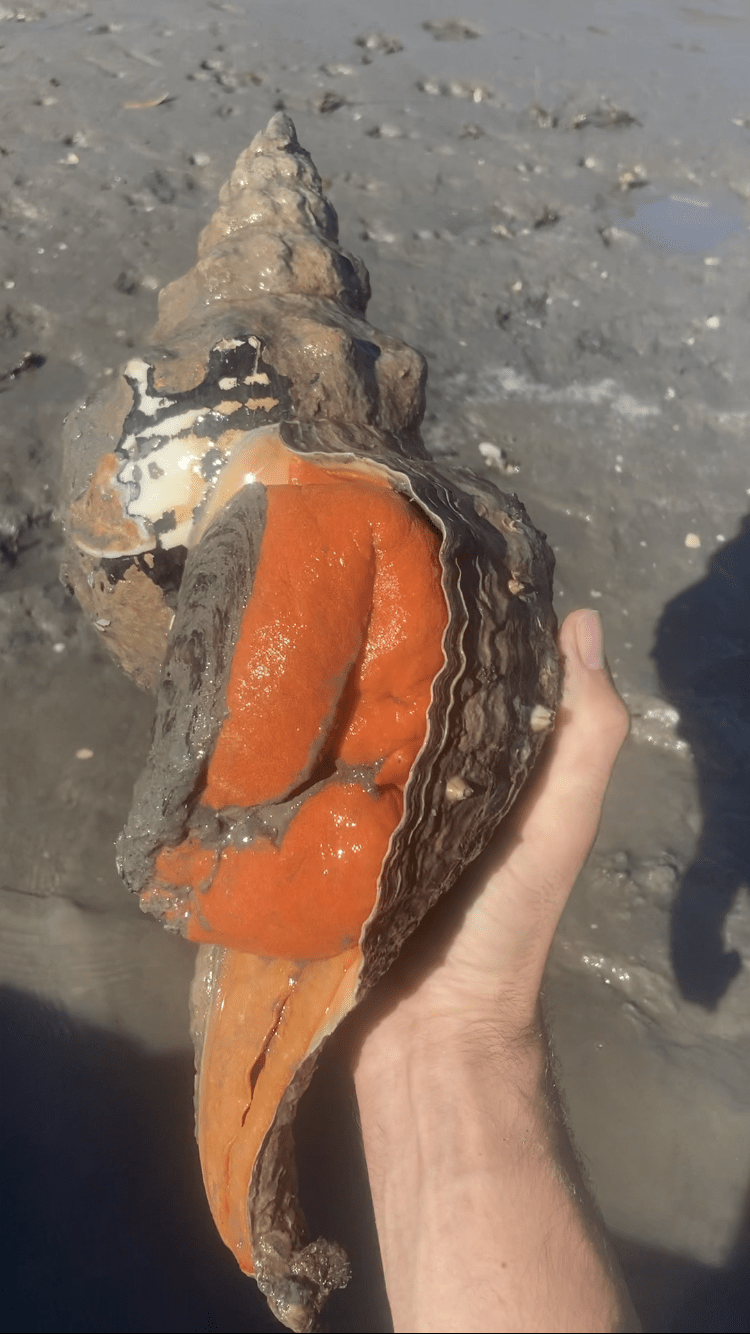
This is not something we get to see on Kiawah everyday! This gigantic snail – known as the Florida horse conch – is the largest snail in North America. In fact, this snail is the second largest on the planet. They snail itself can extend to about two feet, and weighs anywhere from 7 to 11 pounds on average! We didn’t get a chance to weigh this ‘fella, but it was definitely on the larger side.
Our gorgeous horse conch was actually enjoying a smaller carnivorous snail when we found it; inside its grip was a knobbed whelk – one of the more commmon snails we have on Kiawah.
Such a rare find is always amazing to see, but you never know what to expect in the Kiawah River’s beautiful salt marsh.
~ Naturalist Stephen
April 10, 2024 ~ Corn Snake
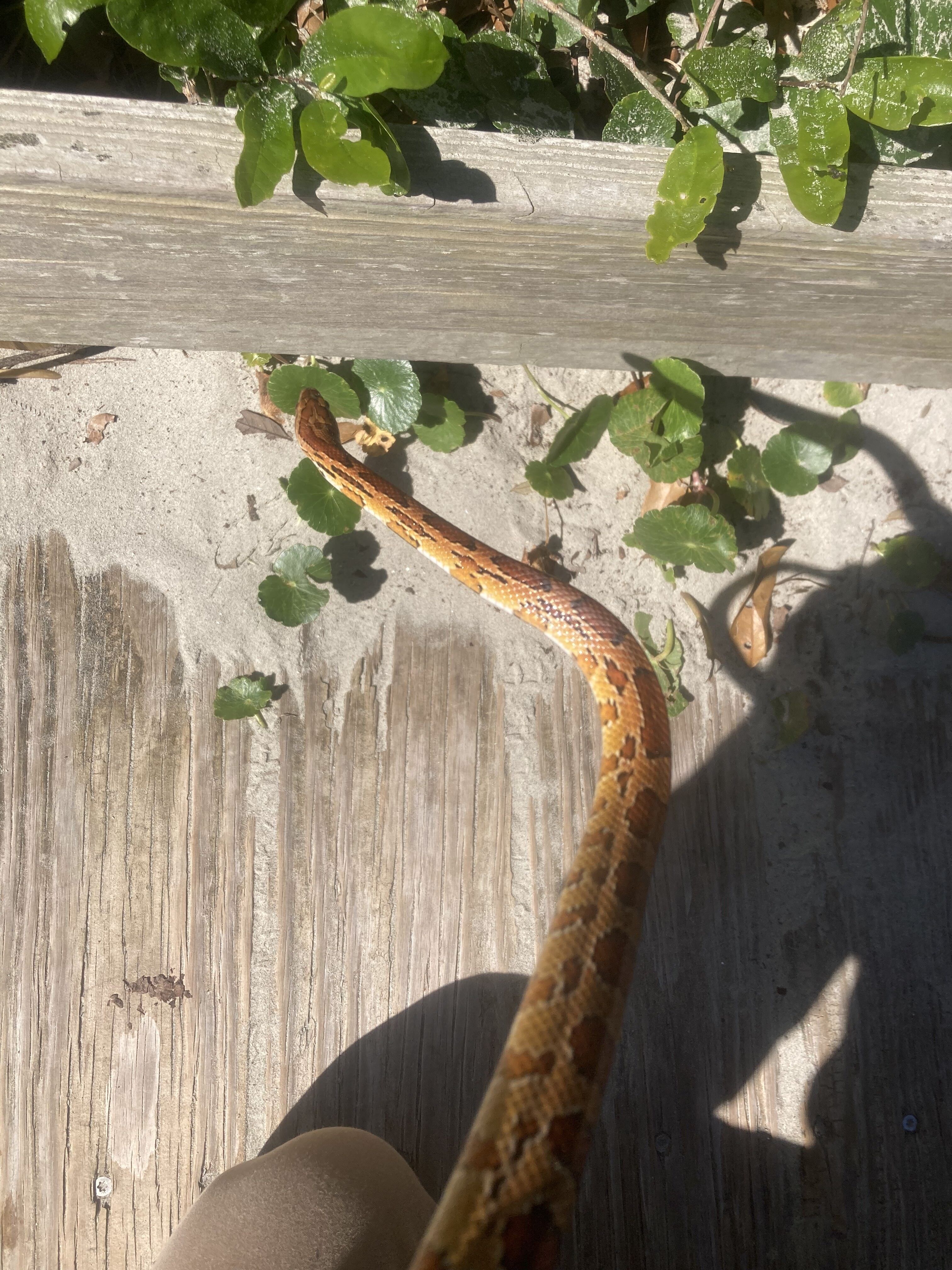
I’m so excited for Spring to be back! The frogs chirping away, the alligators bellowing, the lizards running around with their pretty displays, and = of course – our snakes are out and about!
While most snakes prefer the calmer night to move around and hunt, our cornsnake friend here is diurnal; in short, these snakes are active during the day. They still spend most of their time away from people, and typically find prey by burrowing underneath the ground.
While on a bike tour, I spotted this guy and couldn’t help myself! After I removed him from the boardwalk and showed him to my group, I found a safe spot and released him.
Of course, that’s after I snapped a photo or two 🙂
~ Naturalist Stephen
April 8, 2024 ~ Barred owl

“Who cooks for you?”
Have you ever heard some animal seemingly asking you that question from the woods? If you have, you might have caught the funny catchphrase of our beautiful barred owl! Our Nature Manager, Christian, managed to capture this owl enjoying the sun on a morning birding venture, and we have heard multiple calls coming from Night Heron Park.
Fingers crossed that they are building a nest nearby!
April 1, 2024 ~ Green herons are back!

With early Spring arriving, a huge amount of Kiawah’s summer bird species are beginning to arrive! Keep an eye out for a smaller friend – the green heron – with its beautiful green, red, and white plumage.
These birds are literal fishers – they utilize smaller insects they catch as “bait” by placing them on top of the water, waiting until an unsuspecting fish is tricked into going for the “free” insect. Then, our green heron friend strikes, enjoying a much larger meal as a reward for its patience.
Talk about a smart bird!
March 29, 2024 ~ Black-crowned Night Heron Juvenile
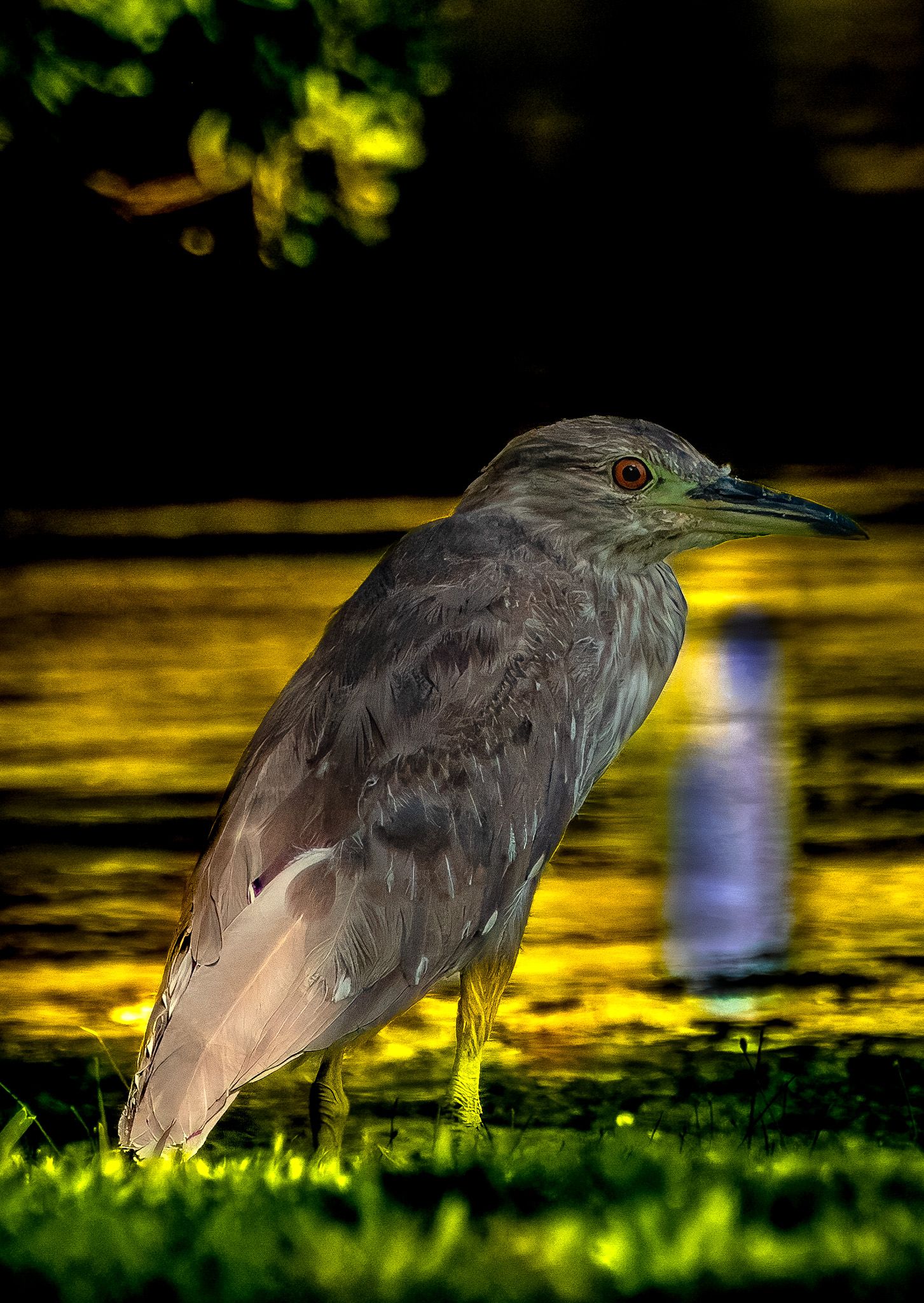
This beautiful black-crowned night heron was found during an Alligator Adventure at Osprey point! As the name suggests, these birds hunt at different times than other herons to avoid competition; typically early in the morning or late in the evening. When we spotted this fella’ early in the morning, it was actively hopping around tree branches searching for food. Like other herons, these beautiful birds will typically be found hunting or resting near water.
Our night heron friend here will get its beautiful black crown when it is three years old; until then, it will sport this plumage.
Happy spotting!
March 20, 2024 ~ Marsh Wren

Earlier this month our Naturalists had an amazing opportunity to volunteer for Kiawah’s secretive marsh bird study! With the help of town biologists, our team flushed dozens of birds into nets; they were quickly untangled, their vitals were taken, and then they were banded and released. These studies help ensure the health and habits of not only individual birds, but of our population as a whole. If you’re out by the marsh then be sure to listen for their beautiful trill call – our gorgeous marsh wrens are definitely singing away in the salt marsh!
March 16, 2024 ~ Oystercatchers!

American oystercatchers are a staple “must see” for any bird lover on Kiawah, and – fortunately for us – they are present year-round!
They are beautiful both resting and in flight; their gorgeous plumage and oddly shaped, bright orange beak makes oystercatchers easy to spot among the other shorebirds that are typically found nearby.
With their long, skinny, dagger-like beak, they are able to “shuck” oysters just like we would with an oyster knife! Be on the lookout for these birds year round – they’re always worth the spot!
March 13, 2024 ~ Yellow-bellied slider
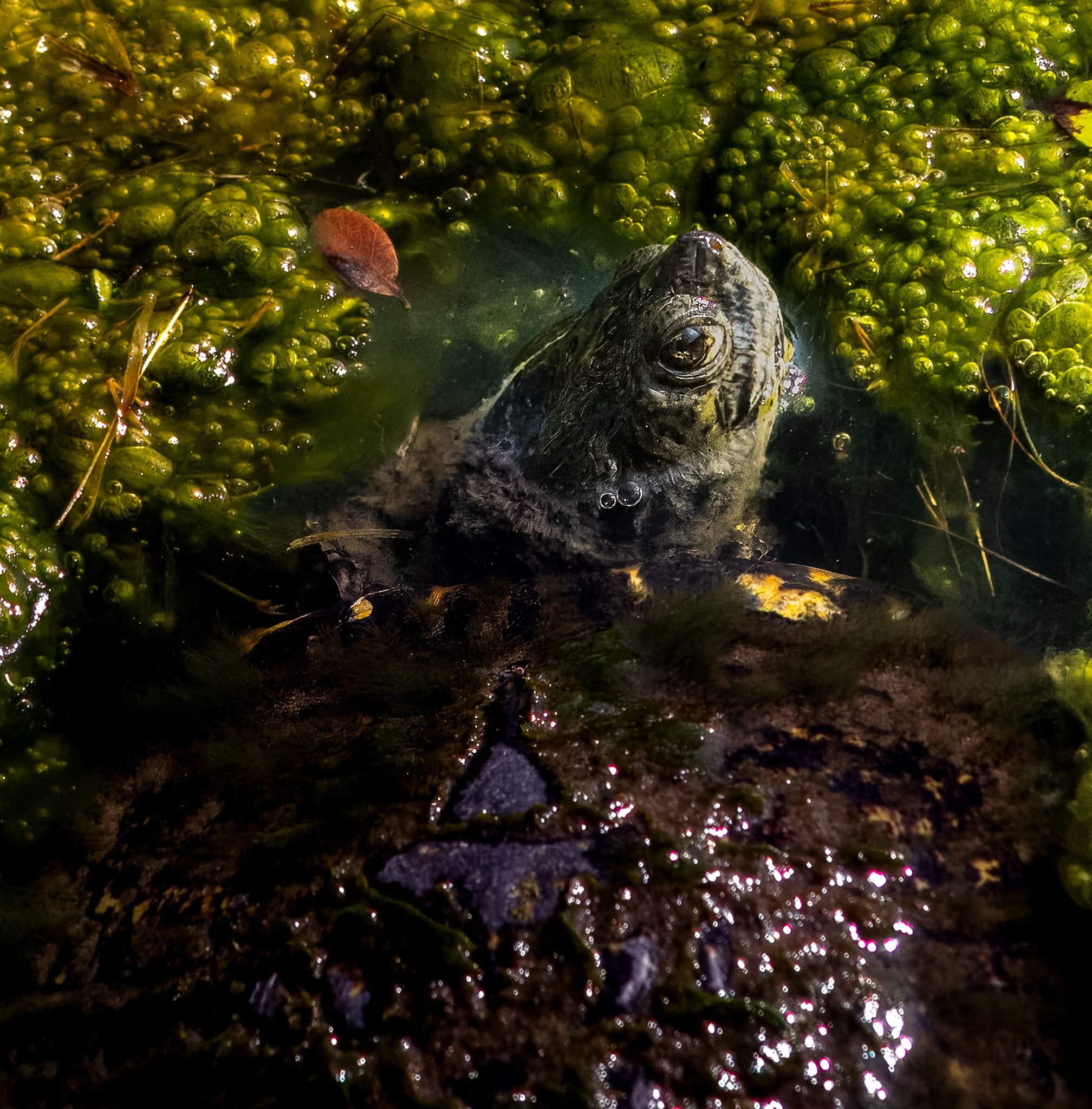
With warmer weather be sure to catch some of our beautiful yellow-bellied sliders soaking up the sunlight! As one of the most common freshwater turtles in South Carolina, you can find these gorgeous reptiles in almost any one of Kiawah’s ponds.
Our yellow-bellied sliders love to group up, so keep your eyes peeled for a “herd” of turtles getting their tan on!
~Naturalist Stephen
March 8, 2024 ~ Eastern bluebird eggs!
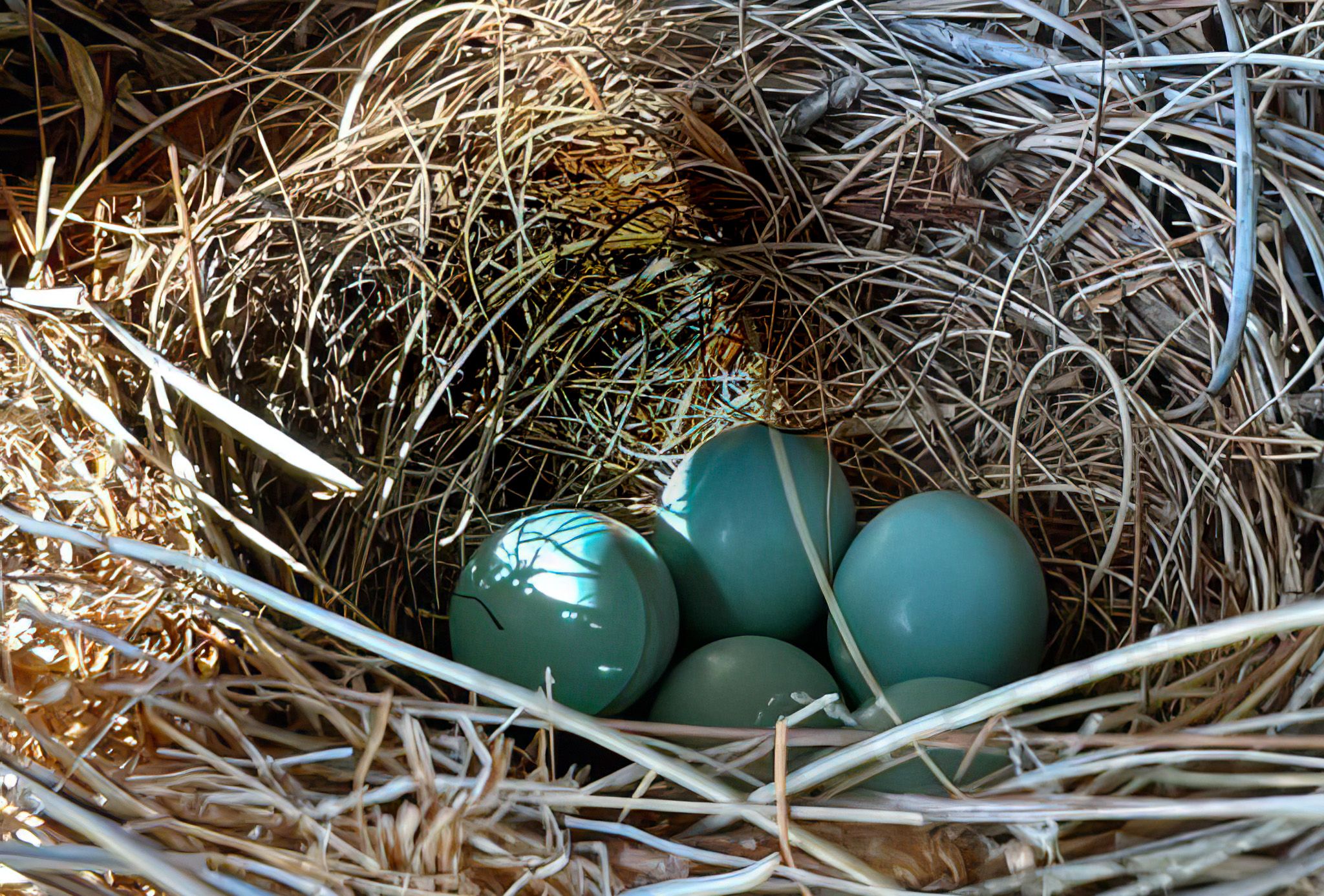
If you’ve been to Kiawah, you’ve probably seen a random bird house or two along our bike paths or near the sanctuary. These houses are vital to our ecosystem, as they house multiple nests from birds known as “cavity nesters.”
Many of our songbirds, like our eastern bluebird, are obligatory cavity nesters, meaning that without a good, carved out “hiding spot,” these birds have a difficult time making nests. This is a similar reason why you might always find wrens in your lights or mailboxes!
These birds are out and about collecting nesting materials and caring for their offspring, so keep your eyes peeled for our beautiful bluebird boxes! If you get lucky, you might find some parents hard at work 😍
March 5, 2024 ~ Black-crowned night heron

These are one of my favorite herons on Kiawah; while they’re not uncommon by any means, they are definitely a little harder to spot than our other long-necked friends. As the name suggests, these herons will typically hunt at odd hours of the day – either in the early morning or late evening – to avoid competition with other wading birds. This guy can commonly be found by the Osprey Point Clubhouse stalking the water for nearby goodies!
As always, happy spotting!
~ Naturalist Stephen
March 4, 2024 ~ Wow, its not a bird!
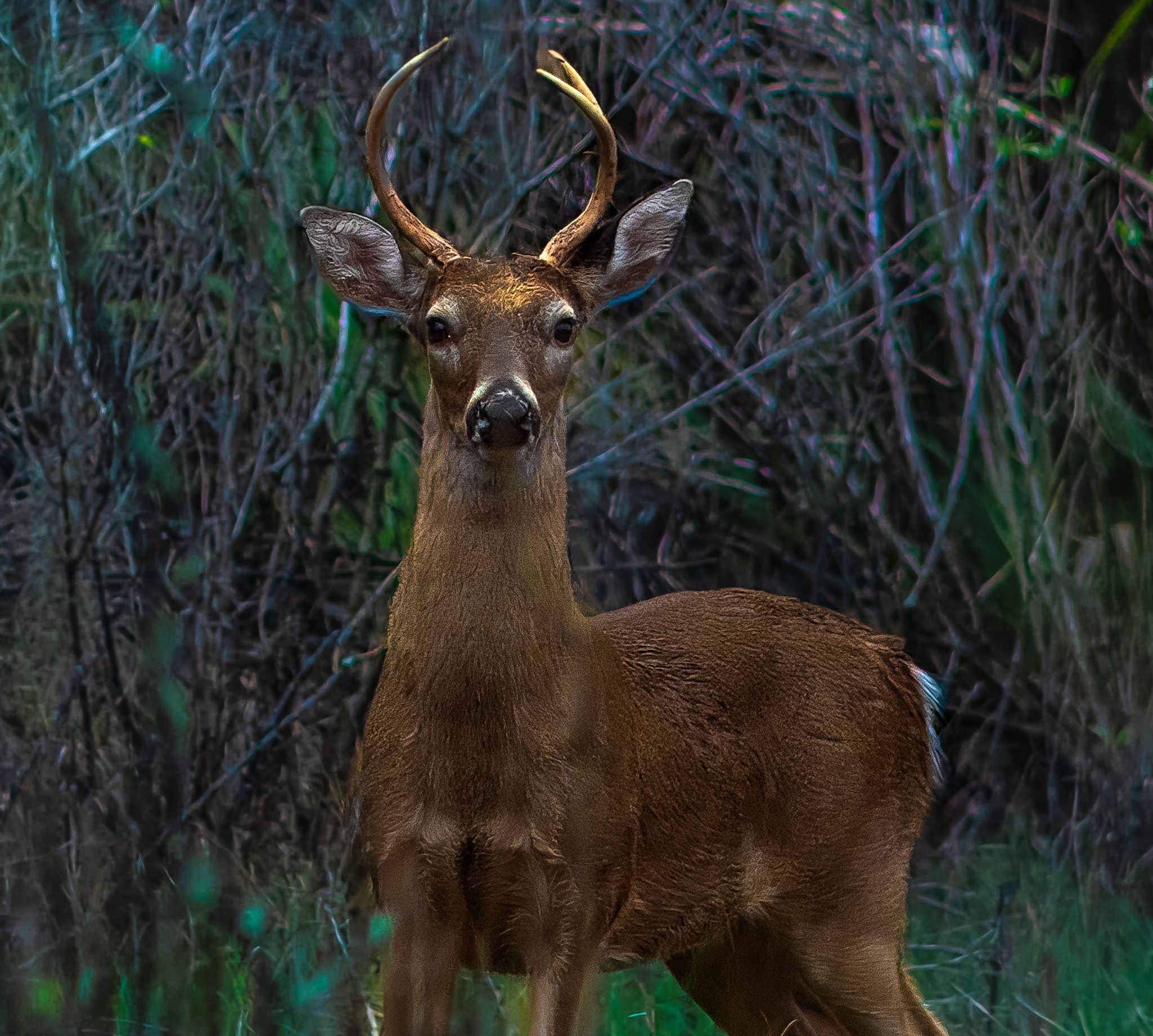
While we all love birding on Kiawah, that doesn’t make our other wildlife encounters any less magical! Here, one of our Naturalists spotted a dear on their Back Island Birding tour. This healthy buck seemed unbothered by the guests, simply looking up to check the group in between his grazing. After a while, the deer seemed to have enjoyed its time in the spotlight enough, and decided to continue moving along the path.
While you don’t expect to find deer in the Marsh, it’s one of the best areas to spot them!
Feb 22, 2024 ~ More white pelicans!

It’s always a treat seeing these majestic beauties, and on Kiawah we have definitely had a great year for white pelicans! With over a 9 foot wingspan and a weight of ~16 pounds, seeing these birds fly around is draw-dropping. While they will likely be leaving us in the coming months, our white pelican friends are definitely one of the many birds that makes Kiawah so special!
Feb 20, 2024 ~ Swamp sparrow

While I was out by the marsh at Mingo Point I came across an uncommon bird on Kiawah – a swamp sparrow! While not rare, their elusive nature definitely makes them a trickier bird to find. It was hanging out in the saltmarsh with yellow-rumped warblers, wrens, and other small birds. Awesome to see!
~ Naturalist Stephen
Feb 16, 2024 ~ Yellow-throated warblers, lesser scaups, and black scoters galore
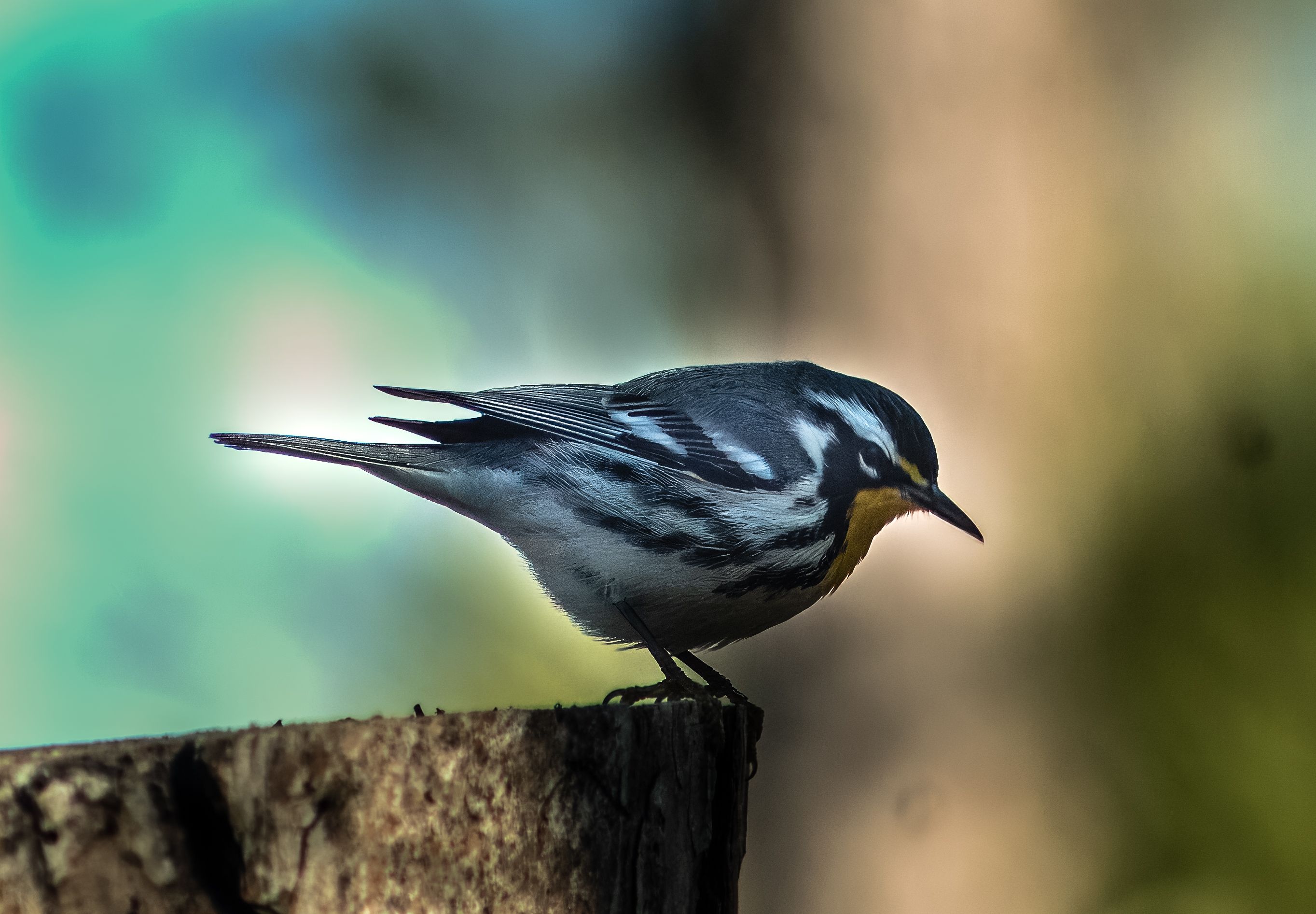
Yesterday was an incredible day for birding! The calm winds and amazing visibility gave way to huge hoards of shorebirds, including loons, black scoters, and lesser scaups. It was like you could see birds on the ocean for miles!
None of us were able to capture any of the shorebirds, but there’s also been quite a few yellow-throated warblers around. A lot of our canopy birds were also enjoying the sun and wonderful weather, so it was no surprise our friend here wasn’t too camera shy. Fingers crossed for many days like this as we move into spring!
~ Naturalist Stephen
Feb 15, 2024 ~ Carolina chickadee (with a band on its leg!)
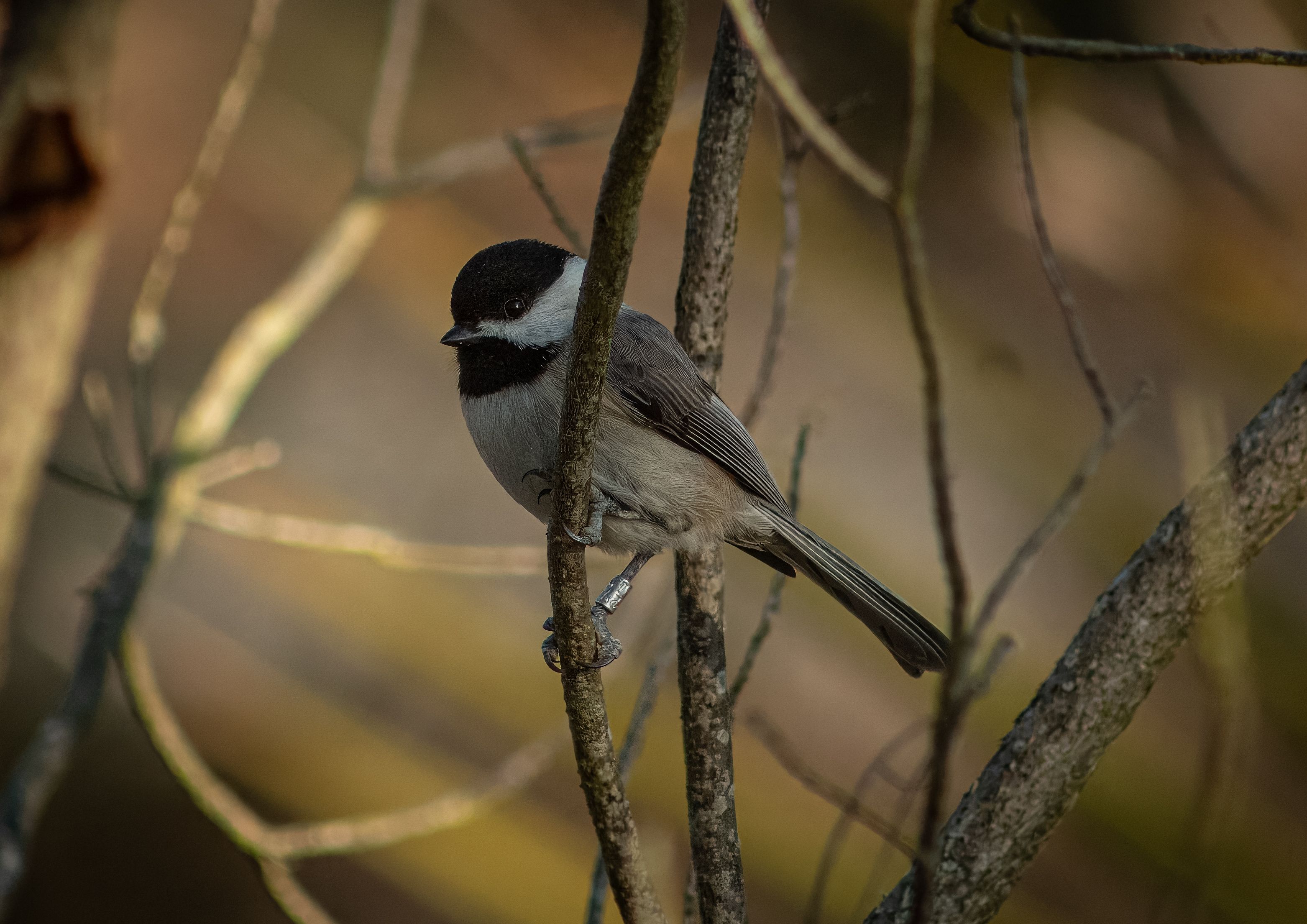
Named by John Audubon himself, the Carolina chickadee was named after the location in which he first found it, but also because he wanted to thank the people of South Carolina for their polite, and welcoming attitude during his travels. This bird, while common on Kiawah, is still telling quite a story here!
Notice the aluminum “band” on its bottom leg. This tells us that, at one point, our chickadee friend was captured and tagged. Birds all over the World experience this, as it teaches scientists much-needed information about different species. If the future, if our friend is recaptured, that unique band will give data as to its lifespan, migration history, and more.
Be on the lookout for these beautiful birds with their gorgeous, varied songs.
Happy spotting!
~ Naturalist Stephen
Feb 13, 2024 ~ brown-headed nuthatch
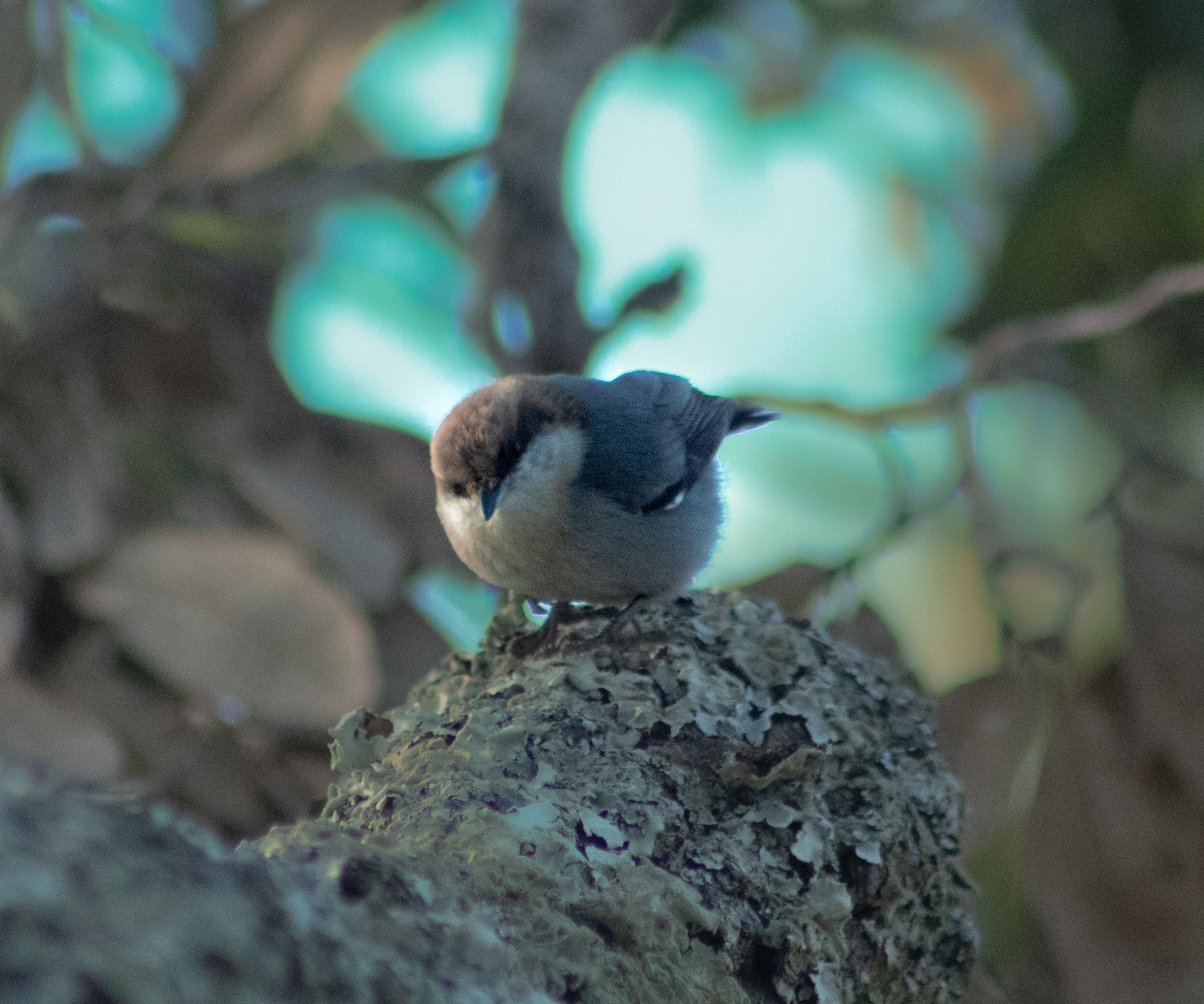
Have you ever walked around Kiawah and heard a series of high pitched “squeaky toy” sounds coming from the trees? If you have, you might have run across a stunning brown-headed nuthatch! These beautiful birds are known for a unique strategy: they start at the top of a tree and work their way down, remaining upside down the entire time. While there are different ideas of why they do this, one possible theory is that, by searching the tree in this way, nuthatches are able to gain a vantage point that other birds aren’t able to see. Simply put, they are able to find bugs that would hide from the other birds they migrate with.
Be sure to listen for a dog’s squeaky toy when you’re out and about on Kiawah! If you look around, you may just find one of these gorgeous fellas’!
Feb 11, 2024 ~ Little blue heron
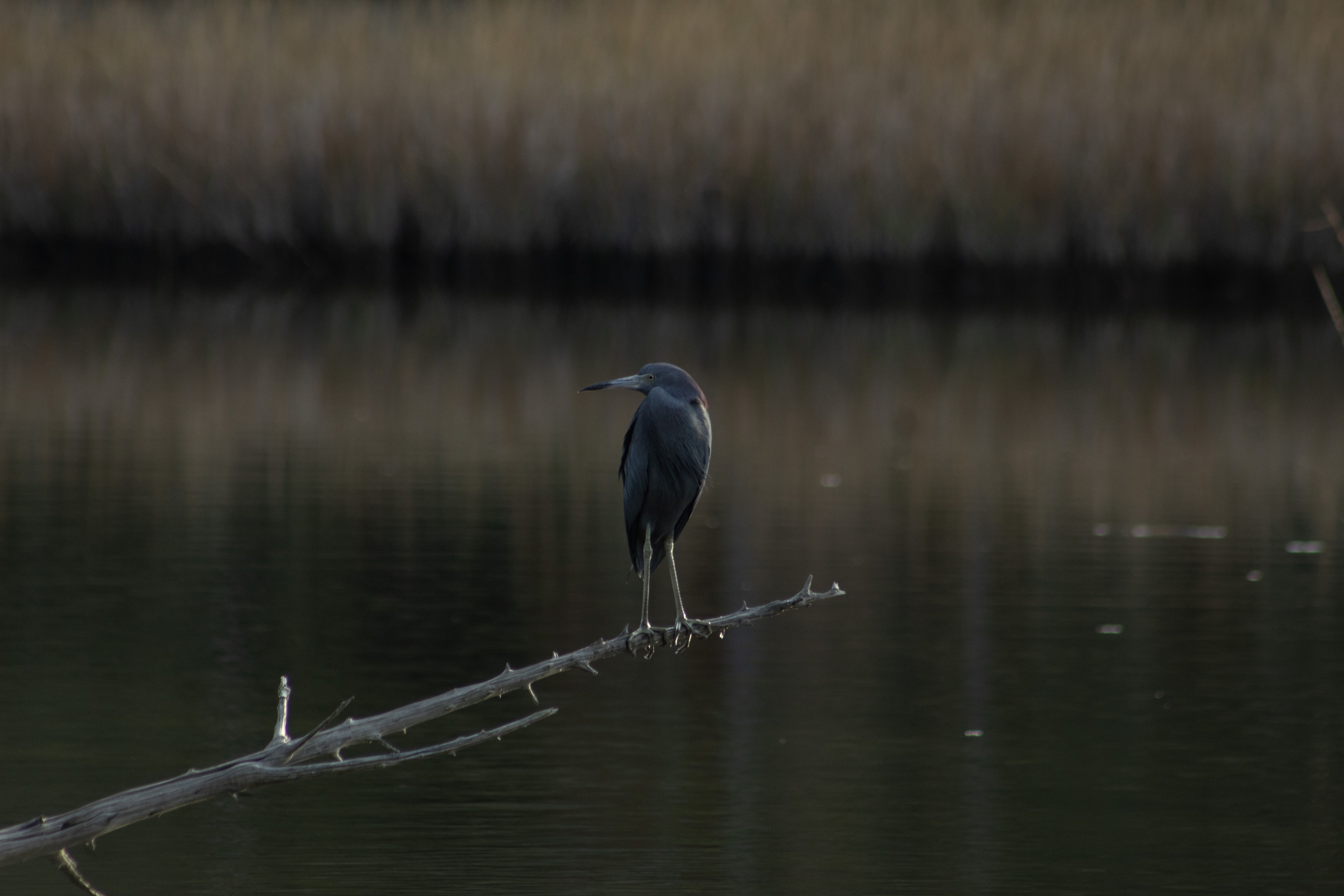
While these birds aren’t particularly rare by Kiawah’s standards, that does not make them any less stunning! Spotting a gorgeous blue coat with hints of purple and red around their neck, these are one of the herons that needs to be on your spotting list!
Best of luck and happy spotting! 🙂
~ Naturalist Stephen
Feb 9, 2024 ~ Red-shouldered hawk
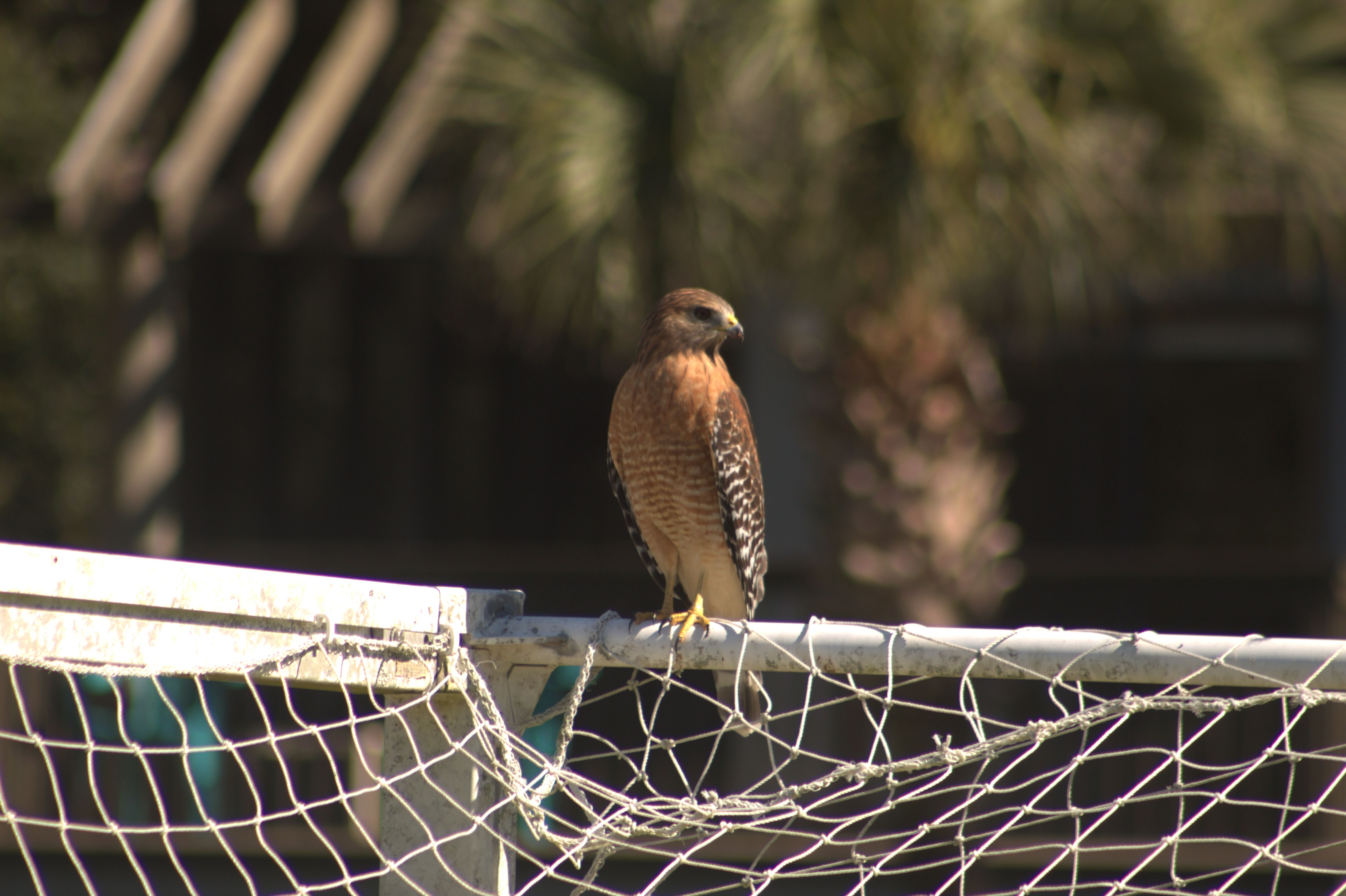
Red-shouldered hawks are a gorgeous, medium-sized bird of prey. Similar to other raptors, you can often find them perched along a tree branch or open area, scanning its surroundings for rodents or small birds. Suggested by the name, the red-shouldered hawk spots a beautiful rustic color on the chest and shoulders; this is especially prominent during mating season, although it takes around three years for a juvenile to fully mature.
As nesting season approaches, expect more of these red beauties to appear. They begin nesting in late February, and continue throughout March, so their presence on Kiawah can definitely be felt if you are out spotting yourself!
Jan 26, 2024 ~ Dolphins!

Each dolphin’s dorsal fin is as unique as a human fingerprint. 🐬✨
The tears and other characteristics on their fins help scientists accurately track and identify them. Talk about a cool feature! 😎
Jan 19, 2024 ~ White pelicans!

It might not be the best photo, but seeing white pelicans always warms my heart! With around a nine foot wingspan, the size of this bird is absolutely astounding! During this encounter we counted around 20 white pelicans in this flock. They were moving around the shallow waters, occasionally resting on the mudbanks.
If I’m lucky, I might get to catch them feeding one day – fingers crossed!
~ Naturalist Stephen
Jan 17, 2024 ~ Deer
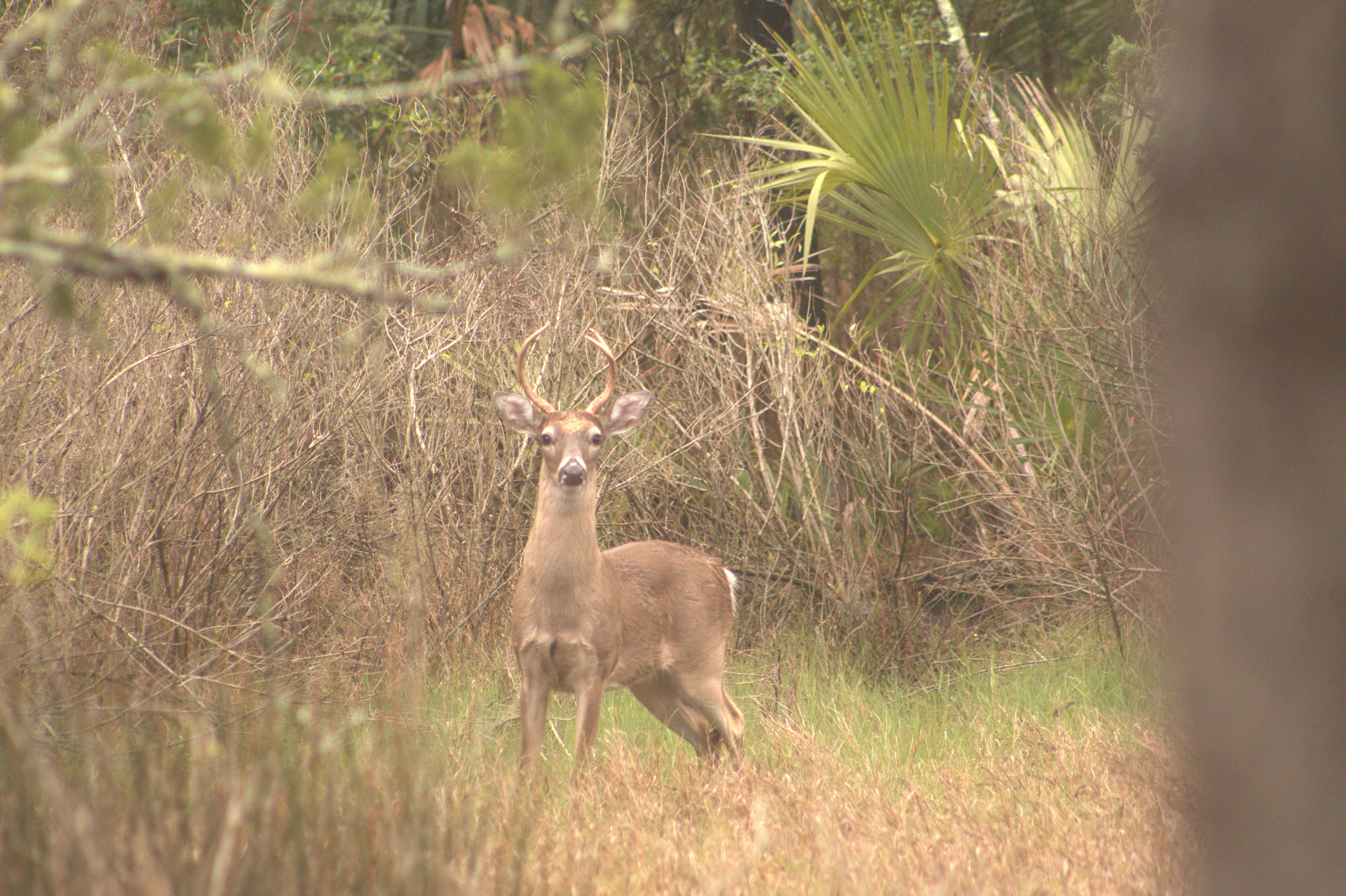
I accidentally snuck up on this beautiful buck during one of my weekly bird walks through the preserve on Kiawah. While deer are common in this area, they typically seem to notice me before I get a chance to get some good shots!
In this picture you could tell he had figured me out, but they have never seemed too timid of humans. He stared at me for quite a while before continuing his journey through the saltmarsh.
How awesome!
~ Naturalist Stephen
Jan 10, 2024 ~ Hooded mergansers
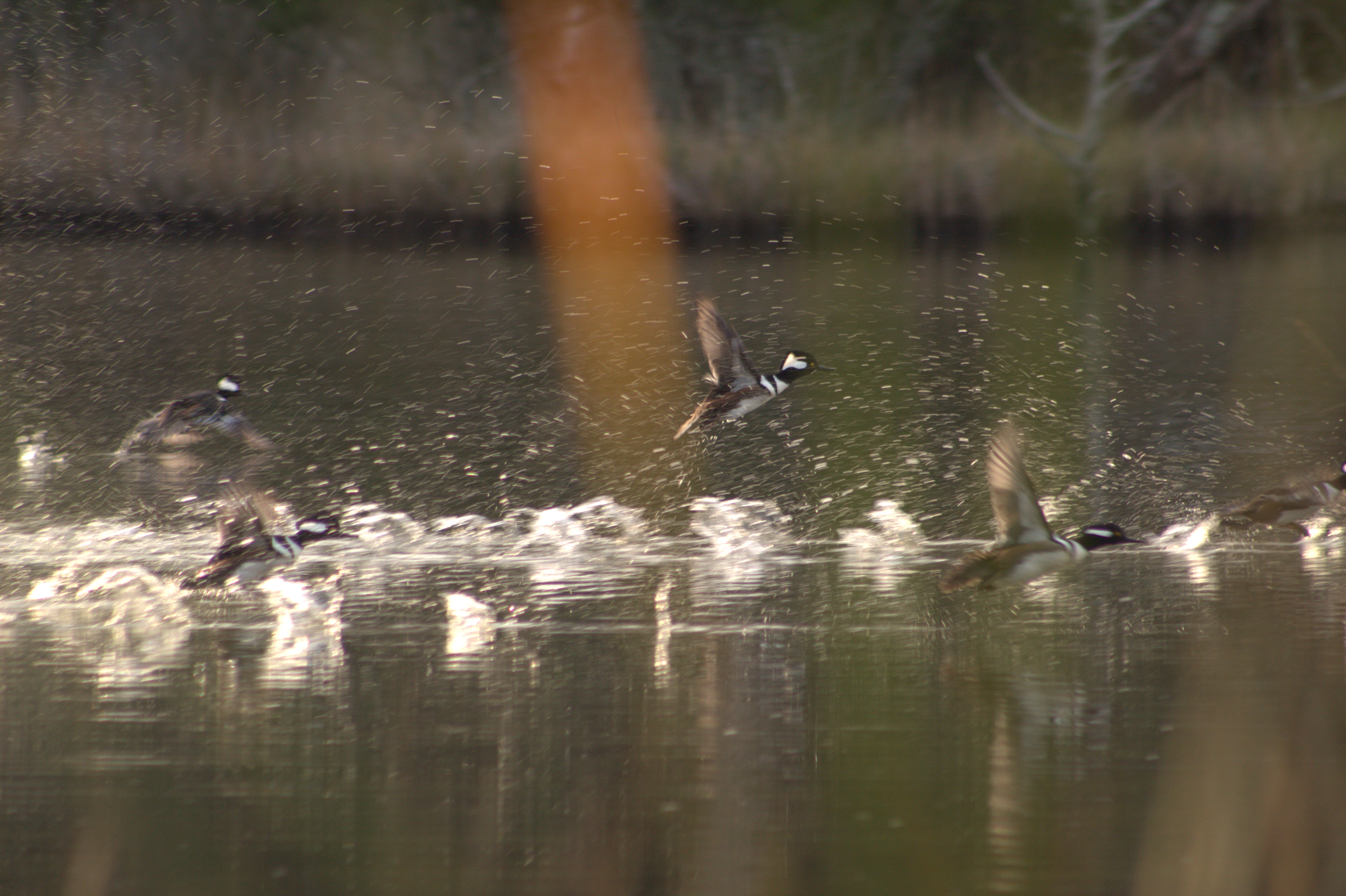
What an awesome sight! Hooded mergansers grace the ponds around Kiawah during the winter months, showcasing their stunning beauty. Don’t miss the chance to witness these gorgeous birds traveling in groups. Take a leisurely stroll and keep your eyes peeled for these pretty ducks! Talk about a birder’s paradise
~ Naturalist Stephen
Jan 3, 2024 ~ Christmas Bird Count!
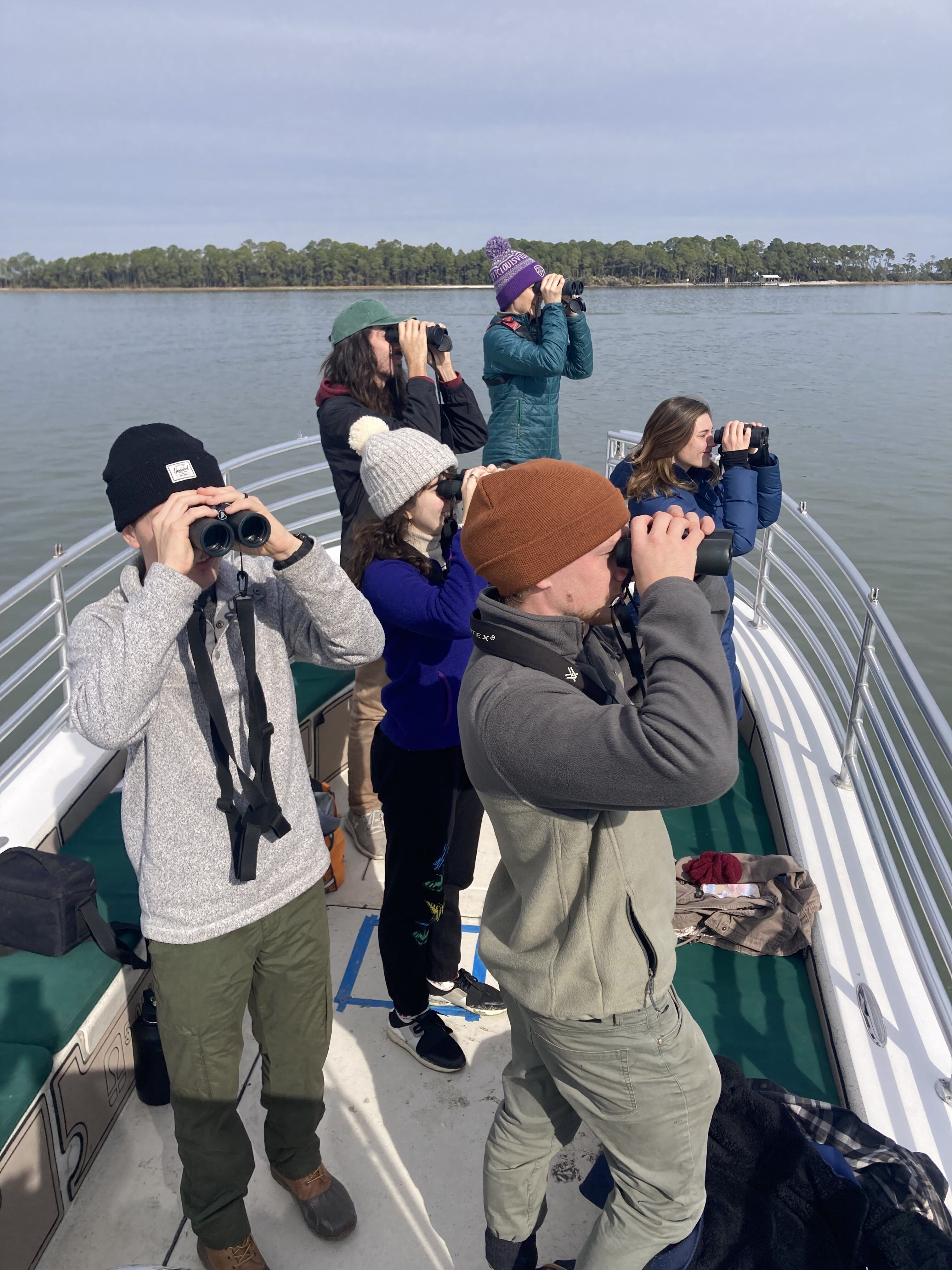
Our Nature staff had an incredible time participating in this year’s Christmas Bird Count on January 3rd. From wading birds to songbirds, woodpeckers to white pelicans, we spotted a stunning variety of bird species along the Kiawah river and Ocean Park. With over 735 birds and dozens of different species counted, it was a truly memorable experience! 🐦🌳